Topps Update Series is here! This is the product to get the Topps Flagship True Rookie Card of Paul Skenes as well as the four Short Print rookies from 2024 Topps Series 2 - Jackson Merrill, Jackson Chourio, Jackson Holliday, and Wyatt Langford. That’s plenty of star power to drive interest in this product - let’s dive into these big name rookies and see if there are any other names of interest.
Tier Ranks
Tier 1 - Cream of the crop. Combination of high-end Hit and Power tools that won’t end up as full-time designated hitters. Power/Speed combo players. Elite SP 1 pitchers (very rare). Potential for being perennial All-Stars and award winners.
Tier 2 - Bats that may lack in a certain area such as top-end power, three true outcomes players with huge power, great real life/fantasy players, but not hobby-elite, or tantalizing raw talents. High-end SP 2 pitchers with additional positive factors such as team, arsenal, pedigree, etc.
Tier 3 - May have some hobby interest due to a single factor such as prospect pedigree, team interest, general hobby hype, an interesting carrying tool, etc.
Tier None - The likelihood of widespread short-term hobby interest, and most likely long-term as well, is close to none. Plenty of pitchers, catchers, role players, hit-tool-only bats, Quad-A power bats, defense-first players, etc. to be found here. Hobby lottery tickets where the odds are stacked against you.
*Catchers and Pitchers are often knocked down a tier just due to their position.
I will not be diving into any rookies that are in the checklist that don’t have their True Rookie Card in the product (rookies with Rookie Debut cards, autos, inserts, etc.). Those players should be found in previous rookie product reviews, mostly in 2024 Topps Series 1 and Series 2. There will also be rookies that are found on rookie combo cards - you can safely assume that most if not all of them are Tier None rookies.

Arizona Diamondbacks
Tier 1
None
Tier 2
None
Tier 3
None
Tier None
Jorge Barrosa, 23, OF
Barrosa can provide plus contact, speed, and outfield defense. He’s one of the shorter players around and while he’s shown the ability to not be a zero in the power department, it’s definitely below average, as you’d mostly expect from a contact-oriented smaller stature player. If he gets full playing time, he probably ends up with 10-ish home runs. And that’s the main rub from a Hobby perspective - there’s not enough power to treat him like a lottery ticket. Add in that the most likely outcome for Barrosa is a bench outfielder than an everyday starter on a first division team and it is pretty easy to spend money elsewhere. He’s a Tier None player with some Tier 3 potential if he can get a full-time role.
Blake Walston, 23, P
Former first rounder in 2019 that’s fallen into the Backend starter or a long reliever bucket. He’s got a full complement of pitches, but as he’s gotten to the upper levels and faced advanced hitters, it’s become less and less effective. While the strikeout rate has dropped, the walk rate has increased into the double digit range. He now has to survive as a pitchability, zone nibbler with lower velocity (his four seamer sits around 91 mph). As a left hander, he probably has a bit more rope to stick as an SP5/SP6 or the second lefty in a bullpen, but any hope of more than that is going to depend on some sort of positive change, with added velocity being the primary catalyst. Until then, he’s going to be ranked with the back-end SP’s in Tier None.
Blaze Alexander, 25, INF
Defense first infielder with a rocket arm - he was on a hot streak when he debuted in 2024, giving us hopes that he could be a Tier 3 everyday infielder, but he sort of fell back into what we expected him to be by the end of his MLB tenure before being sent back down to Triple-A. That’s a backup infielder on a first division roster with an average hit tool and not much else. He won’t hurt you if he’s playing every day, but he’s not going to provide much offensive value either.

Atlanta Braves
Tier 1
None
Tier 2
None
Tier 3
None
Tier None
None

BALTIMORE ORIOLES
Tier 1
Jackson Holliday, 20, 2B
One of the four players that had base rookie card short prints in Topps Series 2, Holliday gets his base Flagship True Rookie card here in Update Series. Of this group of four Series 2 SP rookies, Holliday has struggled the most in 2024, and with the depth of the Orioles roster at the MLB level as well as the minor league level, Holliday hasn’t been able to fully work through those struggles at the MLB level. Still, he’s still got the talent, the legacy, and the hobby hype to maintain a Tier 1 status in this product. The first overall pick in the 2022 MLB Draft, it seems like this is the first time Holliday’s had to make adjustments as a pro. You can see the small differences in his swing when watching his video from his first stint in the majors in April vs. his second stint starting at the very end of July. Just quieter and in a better situation pre-pitch to face MLB velocity. There’s a reason why Baltimore built a team full of amazing young talent - some of it is drafting and signing good players, but some of it is understanding how to develop young talent. When Holliday was back in the big leagues, you could see small but important evidence of that training and development with his fine-tuned approach. I’m still very confident that Holliday will be a future star and should easily hit .275+ with 20 - 25 home runs and 10 - 20 stolen bases per season. Even more than Langford, Holliday did not live up to the sky-high expectations most all of us had for him coming into 2024. Unlike Langford, Holliday had so much other context that kept him more popular in the Hobby than Langford - being a legacy player, being a first overall draft pick, often being considered the top prospect in baseball heading into the system (although Langford had some supporters in that regard), and being marketed by Topps more than any other rookie throughout 2024. If his 2024 on-field performance leads to any buying opportunities, I would happily take them.
Tier 2
None
Tier 3
None
Tier None
None

Boston Red Sox
Tier 1
None
Tier 2
None
Tier 3
None
Tier None
Justin Slaten, 27, P
A high leverage bullpen arm that has seen a lot of success in his debut MLB season. A Rule 5 pick out of the Rangers system by the Mets and traded to the Red Sox, in a real baseball sense, Slaten has been a great result for the Red Sox. In a hobby sense, there’s not a ton to get excited about. There’s a small possibility that he finds his way into a closer role at various points in his career, but we’d probably like to see his sweeper become more effective before that happens. There’s also an outside chance that with his four pitch mix, the Red Sox decide to convert him back into a starter, which would also give him a bit of upside. He’s a Tier None guy for now, even with the strong results. Relievers need to have electric stuff, and I have yet to see that with Slaten, even with his strong results.
Naoyuki Uwasawa, 30, P
After reportedly turning down guaranteed MLB deals this off-season as he was coming over from the NPB, Uwasawa signed a minor league deal that was a split contract with an upward mobility clause. When it was clear he wasn’t going to make the opening day roster, the upward mobility clause came into play, which is basically the ability for a player to either be added to the current team’s 40 man roster or force a trade to an MLB trade that will do it. Uwasawa found a taker in the Red Sox and was shipped out to Boston. He’s mostly pitched in Triple-A for the Sox, but he did get a couple of late inning appearances in May to claim some MLB service time. Uwasawa is a bulk inning, control guy with a kitchen sink of pitchers. His main weapon is the splitter, and his four seamer barely touches 90 mph, so he has to get by with deception and control. And so far, outside of those few MLB innings in May, he has not been able to do so. Outside of some potential minor interest from international collectors, he’s toward the bottom of Tier None.

Chicago Cubs
Tier 1
None
Tier 2
None
Tier 3
Ben Brown, 25, P
There’s been very little information with Brown’s current neck strain issue other than he is continuing to experience soreness since he went on the IL in mid-June. That’s quite disconcerting, but on the other hand, Brown has a lengthy frame at 6’6”, so neck and back issues are almost to be expected. He’s not exactly been the picture of health as he’s worked his way through the minors either, so this may just be the Ben Brown experience. That health concern, and his reliance on two pitches (a four seam fastball and a knuckle curve), may ultimately land Brown in the bullpen full time. Prior to being shut down, Brown bounced between the rotation and the bullpen in Wrigley. Back when I wrote up his profile in the 2023 Bowman Preview, I had Brown as a Tier 3 player that I really loved the potential and video, but the red flags of health and bullpen risk kept me from pushing him into Tier 2. It feels like not much has changed. He generates a ton of whiffs, but also can get hit hard, which isn’t great considering his home ballpark. I’ll keep Brown in Tier 3 even if his Ceiling is that of a mid-tier SP with some Tier 2 possibilities, with his downside being a Tier None full-time reliever that never develops an effective third pitch. I still like the upside, but have to acknowledge the downside.
Tier None
Luis Vázquez, 24, INF
Defense first infielder that started to show enough on the offensive side in the past year or so, elevating his profile to be more than just org depth. The defensive floor always gave him a chance at making it to the bigs, which he did this season for 11 games total spread across two stints. He’s got contact rates and power numbers that all hovering the average to above average band, although he does swing outside of the zone too much even if he makes better than average contact out there. He’s an MLB bench piece as a utility player now, and could have moments of streaky value when you consider a hitter-friendly park and a highly collectable team. Still, as an overall ranking, he falls into the Tier None bucket.

Chicago White Sox
Tier 1
None
Tier 2
None
Tier 3
Bryan Ramos, 22, 3B
I was a bit surprised when Chicago called up Ramos, skipping Triple-A altogether, but they had a need at third base with Yoan Moncada yet again missing almost an entire season due to injury. Ramos was not able to fill that role successfully in the few short stints he’s had at the big league level, unfortunately. While he showed the discerning eye we’ve appreciated about him in the past, not chasing outside of the zone and striking out less than 21% of the time, he just hasn’t made enough contact, hitting below the Mendoza line. Ramos is a power hitting corner bat that was regularly found towards the top of White Sox prospect lists heading into the 2024 season. His star has certainly faded with the lack of MLB results and while he’s been decent at Triple-A with the various back and forth trips he’s made to the majors in 2024, he hasn’t crushed the highest level of the minors either. If you asked me prior to the year on whether Ramos was a Tier 2 player or not, I would have said he was on the borderline. With the 2024 season in the rear view, he’s fallen into Tier 3. At just 22 years old, I’m by no means out, but the bar has certainly gotten a lot higher for Ramos to return to Hobby relevance. I wouldn’t buy low, but I wouldn’t fault anyone who did.
Nick Nastrini, 24, P
Traded to the White Sox at the 2023 trading deadline from the Dodgers along with Trayce Thompson and fellow White Sox Update Series rookie Jordan Leasure for Joe Kelly and Lance Lynn, Nastrini is a pitcher with big stuff and little control over where it’s going. He’s been working out of the rotation for the most part as the Dodgers and now the White Sox would love for him to harness his stuff and become the strikeout terror in the middle of a rotation. However, the lack of control presents significant bullpen risk. With the state of the White Sox at the moment, there’s no reason not to keep trying to make Nastrini happen in the rotation, even with his scary double digit walk rates. In his 35 MLB innings in 2024, he had a walk rate over 20% which is not great, Bob. The Ceiling is super high with the floor super low. He’s got Tier 2 upside and Tier None downside in equal weighting, so I’ll split the difference and rank him in Tier 3.
Tier None
Jordan Leasure, 26, P
Traded to the White Sox at the 2023 trading deadline from the Dodgers along with Trayce Thompson and fellow White Sox Update Series rookie Nick Nastrini for Joe Kelly and Lance Lynn, Leasure is a high-octane, high leverage reliever. As with most high-octane bullpen arms, Leasure has struggled with inconsistent command of his arsenal. That arsenal consists of a 96 mph four seamer, high 80’s slider, and high 70’s curveball. All three pitches get their fair share of whiffs, but he’s also never had below a double digit walk rate in any meaningful sample of games. There was some hype leading into 2024 as he made the team coming out of Spring Training and the White Sox didn’t really have a bonafide closer on the roster. To be fair, they still don’t, although Prelander Berroa should be given a shot at that role sometime soon. Regardless, lack of results and a shoulder issue have basically taken all of the air out of the balloon for Leasure. There is Tier 3 upside if he can find an elite closer role at some point in the future. For now, he’s with the rest of the bullpen arms in Tier None.
Zach DeLoach, 26, OF
Acquired from the Mariners along with Prelander Berroa this past off-season for reliever Gregory Santos, DeLoach’s most likely outcome is a strong side platoon outfielder or possibly a starter for a second division team. With the White Sox looking like a second division team for the foreseeable future, DeLoach should get every opportunity in the next few seasons to prove if he can be a part of the daily lineup card. There’s not much that stands out with DeLoach. He’s got average power with an average to below-average hit tool. He regularly gets double digit walk rates, and that is driven by an overly passive approach. As an illustration, in Triple-A in 2024, he was in the 30th percentile for zone swing rate. When he is swinging, the whiff rate, swinging strike rate, and zone contact rates are all in the bottom third of the league. He’s not overly fast, but he’s got enough speed that he can pick up some opportunistic stolen bases. I need to see a lot more from the hit tool before I get comfortable enough to move him into Tier 3. At the moment, he’s an easy Tier None slotting.
Jonathan Cannon, 24, P
Backend starter that can eat innings, keep the walks down, and limits the hard contact through movement and a willingness to use all of his options in his five pitch arsenal. He throws his 93 mph sinker the most of any of his pitches, and along with his change-up, are his best pitches. His 94 mph four seam fastball is his least effective pitch and accordingly, he throws it the least of any of his pitches. There’s a small level of prospect pedigree as a third round pick out of a major SEC program (Georgia) that was typically considered as a top 10 prospect in the Chicago system, so maybe that drives some interest. On the other hand, even though Cannon doesn’t really have any bullpen risk, he doesn’t have much Ceiling either. There’s not enough whiffs or strikeout potential, and let’s face it, being on the White Sox doesn’t help either. This is a Tier None profile with an outside shot at Tier 3 upside, but he’s an easy one to avoid for the Hobby.

Cincinnati Reds
Tier 1
None
Tier 2
None
Tier 3
None
Tier None
Jacob Hurtubise, 26, OF
Speed and OBP strong side platoon outfielder that has seen his status as an undrafted free agent in the 2020 Pandemic shortened-draft rise to that of a potential useful MLB roster piece moving forward. Has the arm for right field, and can play center field in a pinch. The perfect 4th outfielder on a first division team, and some potential as an everyday outfielder at the top of a lineup given his OBP approach. He just doesn’t chase or whiff that much, which is a really nice real baseball skillset. There is some Tier 3 upside, but until we see something more than speed, OBP, and defense, which don’t hold much weight in the Hobby, he’s in Tier None.
Fernando Cruz, 34, P
Debuting in 2022, Cruz is finally getting a rookie card. All the clamoring and social media posts and angrily worded emails to Topps has finally led to Cruz getting his rookie card in his third season of MLB experience. Hopefully you all realize that is satire. Cruz is your typical back-end of a bullpen type of arm. A lot of whiffs, a lot of walks. He’s got a three pitch mix of a splitter, cutter, and four seamer. The splitter is the weapon and plays off of the four seamer and cutter with an almost 60% whiff rate. On the other hand, the four seamer and the cutter get teed off on. It’s going to be tough sledding with just one effective pitch, so it’s really easy to dismiss Cruz from a Hobby perspective even if it’s cool he’s finally getting a rookie card at 34 years old.

Cleveland Guardians
Tier 1
None
Tier 2
None
Tier 3
Kyle Manzardo, 24, 1B
After a huge 2022 minor league season rocketed Manzardo into Top 10 overall prospect status, it’s been a bumpy road on and off the field. Since then, he’s dealt with family health concerns, a trade from Tampa to Cleveland, and missed time due to a shoulder injury. His on-field results have been mixed, his first stint at the majors in May-June was not great, and his return in September has led to some really good numbers. Manzardo vaulted into Top 10 consideration back in 2022 because he had a power surge of 22 home runs between High-A and Double-A, and that was the main question with his profile. The hit tool and approach were unquestionably above average if not plus, but the power for the most-premium of fielding positions was the main question mark. Manzardo regularly keeps his strikeout rate below 20% and his walk rate in the double digits. All the top line stats we like to see. The power is still a question in my mind - the top end exit velocity is still not what you want from a power hitter. Our expectation should be that he’ll be a gap to gap, line drive hitter rather than someone that will regularly hit 25+ home runs. We don’t care much about the defense - he’s perfectly capable at first base, and he’s definitely not stealing many if any bases - he has five in his career since he became a pro after the draft in 2021. Rewind the clock to 2022 and you’re looking at easily a Tier 2 player with a super high floor. Fast forward to now and the hype has essentially all died down. That floor still gives him enough interest and future offensive numbers to keep him in Tier 3. If he turns in a John Olerud style career, that will be a fantastic real baseball result. It unfortunately will not be a fantastic result hobby-wise.
Tier None
Cade Smith, 25, P
Smith was one of the best relievers in baseball in his debut season of 2024. In 75 innings pitched, he gave up one home run, to Dylan Moore of all hitters. He throws a 96 mph four seamer, a high-80’s split-change, and a low 80’s sweeper. All three are big whiff pitches, in the 30 percent range. His extension is in the 98th percentile, which really allows his pitches to play up. The sweeper was the pitch that was taken advantage of the most, and consequently it was the least thrown of the three. Prior to his MLB debut, Smith had walk rates typically in the double digits, which suppressed any expectations with him. However, he’s been able to keep it under 6% in 2024, which is unbelievably good. If regression doesn’t strike Smith moving forward, and the sweeper takes the next step forward, there’s a future lock down closer here. With that role blocked in Cleveland in the short term, it’s going to be tough to have much Hobby value for Smith in the short term, so he’ll land in Tier None in the reliever bucket. On the other hand, the Ceiling is definitely a Tier 3, high leverage reliever, with like a 1% chance that the Guardians decide to go the Crochet route and turn Cade Smith into an Ace. Because, you know, Cleveland can pretty much do whatever they set their mind to when it comes to pitching.
Johnathan Rodriguez, 24, OF
An above average to plus power bat that has the arm for right field, but is pretty much average to fringe in all other areas of his profile. He’s not a good runner on the basepaths or in the field, and his hit tool isn’t good enough yet to believe that he can regularly get to his game power. He doesn’t swing much, leading to high walk rates, but when he does swing, he’s making contact at a below average rate. It’s fine to have low zone swing rates if he’s like fellow Guardian rookie Kyle Manzardo where you make up for that with high contact rates. It’s not great when the contact rates are in the bottom half (inside zone) or bottom third (outside zone) of the league (Triple A stats cited as he’s only had 13 MLB games on his resume). On the power side, he’s now put back to back 29 home run seasons together, which is nothing to sneeze at. On the other hand, recent prospect experiences like Malcom Nunez and Elehuris Montero remind us that going too deep on profiles like this often end up ending in Hobby tears. I think we can safely ignore Rodriguez from the Hobby perspective until we see the contact rates go up and the strikeout and whiff rates go down.

Colorado Rockies
Tier 1
None
Tier 2
None
Tier 3
Jordan Beck, 23, OF
A former top 40 overall pick from the 2022 MLB Draft, I’ve been a low-key fan of Beck since I watched him at Tennessee during the college season. My concerns with Beck were the swing and miss, but I was intrigued with the 20-10 potential, and after he was drafted, I was even more interested, thinking that profile could be enhanced by Coors field. In truth I was more a fan of his teammate Drew Gilbert after following the Vols during that College World Series run, but injuries have made it difficult for Gilbert to keep up with Beck’s trajectory. Beck beat his former Vols teammate to a big league debut, but just a month after his late April debut, Beck broke his hand and did not make it back until mid-August. Given that disjointed season and small samples on either end of the injury, I wouldn’t look too closely at his stats and simply write him off. On the other hand, it does paint a picture of the lower end of outcomes for Beck. That’s a high strikeout rate, low walk rate, part time outfielder that will steal some bases and pop some home runs, but may not be able to get to the 20 home run mark because of the hit tool issues. A more positive outcome would be Beck regressing towards what we saw in the minors, which was a sub-25% K rate for most of his time down there with double digit walk rates. That allows for him to get to that power and give us the Tier 3 potential. I’ll be on the optimistic side here, but not overly so, putting Beck into Tier 3. There is an outside shot at a Tier 2 player sometime in the future, maybe something like a light version of Jayson Werth with a couple of peak years to tantalize you. However, the reality is that the swing and miss may be too much to overcome for him to have an everyday regular role.
Tier None
None

Detroit Tigers
Tier 1
None
Tier 2
Colt Keith, 23, 2B
Keith is a former top 25 overall prospect that signed a deal to buy out his arb years, leading to an opening day roster spot. He has two plus tools and they are the ones we care about the most in the hobby - hit and power. Neither showed up to that level in his debut year, and a lot of the air has come out of the hype balloon. Still, he held his own, even if it was a bumpy ride. He ended the 2024 regular season with a .260 average, 13 home runs, 7 stolen bases, a K rate below 20%, and a wRC+ of 97. Just barely 23 years old and now with a full MLB season under his belt, you hope that the best is yet to come. Ideally that comes next year, but as we’ve seen with many of the recent players debuting at young ages, the progression is not exactly linear, as they say. If you tell me by the time Keith is 26 - 28 years old that he is hitting .280 - .300 with 25 home runs and 10 steals every year, I would not be shocked in the least. Add in a young and ascending Tigers team to the mix, and Keith is at least worthy of Tier 3 if not Tier 2. If his cards are cheap enough, I’d be more than willing to allocate a small portion of funds in his direction.
Tier 3
None
Tier None
Tyler Holton, 28, P
In his third major league season, Holton is finally getting a rookie card. We like to complain about pitchers in general, but especially relievers, getting rookie cards in products. On the other hand, this is the sort of product that probably should have them - paper Flagship products need to fill out huge checklists, and this is how you do it. That’s not to say Holton is bad and shouldn’t even be in consideration, as he consistently has turned in strong results at the MLB level. He’s just not that sexy of a pitching profile. He succeeds through weak contact and limiting walks with a kitchen sink arsenal rather than high velocity and a lot of strikeouts. He’s a great real baseball success story and likely has a long career because he’s a lefty, but for the Hobby he’s an easy pass and falls into the Tier None reliever bucket.
Wenceel Pérez, 24, OF
A hit and speed backup outfielder, Pérez by all accounts is a good guy and easy to root for. In just 112 games in his debut season, he was able to put together a 9 home run, 9 stolen base season with a 95 wRC+. As Smada regularly commented in the Daily Sheet, he’s a league average bat, and that’s likely his long term outcome with stolen bases, and defense which we can ignore for the hobby, being the main area of positive value. That’s not going to drive much Hobby value even if it proves to be a good result for the Tigers from a real baseball perspective. If Pérez can exceed the home run expectations of 10 - 15 per season, which is no small task in Detroit, then there is an outside shot at Tier 3 relevance. Until we see that 20-20 Ceiling as more of a reality than an outlier result, then he’ll be ranked in Tier None with other 4th/5th outfielder types.
TJ Hopkins, 27, OF
While considered more of a speed guy coming into the draft in 2019, Hopkins has slowed down and transitioned into more of a guy who can pop his fair share of home runs. He still shows strong sprint speed numbers, but for whatever reason isn’t going out of his way to run on the base paths. At this point, he’s a backup outfielder/org depth and he’s now on his third organization. After debuting with the Reds in for a brief and uninspiring 25 games in 2023, he was traded to the Giants for cash in the off-season. Just before pitchers and catchers could even report in mid-February, the Giants DFA’d Hopkins to make room for acquiring Otto López. The Tigers claimed Hopkins and then two days later DFA’d him to make space for signing Gio Urshela. This time around, Hopkins made it through waivers and landed in their Triple-A affiliate once the minor league season ended. Towards the end of May, a torn labrum ended his season and now you are all caught up on the life and times of TJ Hopkins. He’s a Tier None backup depth outfielder that your best hope is to catch a hot streak home run lightning in a bottle at some point in the future. He’s an easy avoid for the Hobby.

Houston Astros
Tier 1
None
Tier 2
None
Tier 3
Ronel Blanco, 34, P
Blanco came pretty much from nowhere to be one of the best performing pitchers in baseball in 2024, including throwing a no hitter in his first start of the season. As the Astros rotation got healthier, and Hunter Brown figured out his issues, Blanco ended up getting pushed briefly out of the rotation, and will mostly be pitching from there in the playoffs for as long as Houston is still in the postseason. So how did he go from relative unknown, past his prime swingman? His stuff isn’t overpowering, and there really isn’t a significant difference year over year in his pitches or pitch mix. It’s more along the lines of Blanco learning how to pitch to his strengths, and optimizing his opportunity. Don’t give hitters what they want. Give hitters a free pass if you fall behind, resulting in a high walk rate (which can work if done properly - the Blake Snell Cy Young in 2023 approach). Get weak contact, get guys to chase, and let your defense work for you. The BABIP numbers are really low, the FIP numbers are really high, and that makes you think this isn’t sustainable. But for one glorious season, at least so far, it was. At his age, I wouldn’t be betting on long term Hobby value and would take every profit I could. His approach, though, is suited for an older, veteran pitcher, so maybe there is a few more years that Blanco can defy the odds. That no-hitter alone deserves Tier 3 recognition, and a 13-6 record with 2.80 ERA makes it a no-brainer to rank him there.
Tier None
Spencer Arrighetti, 24, P
Arrighetti is a mid to backend starter with a kitchen sink arsenal. It has been a roller coaster experience in his debut season including two separate outings of giving up seven earned runs, including his debut. When he’s on, he can bedevil hitters with that arsenal, limit the walks, and rack up the strikeouts. In three of his five August starts, he had double digit strikeouts. I wouldn’t be surprised if the Astros are able to iron out a lot of those rough spots and turn Arighetti into a mid-rotation SP. At the moment, the lows are too low and he’s more of a back-end SP5/SP6 type that won’t get much if any Hobby love, outside of having a last name that will have every breaker of Update Series making some form of Spaghetti joke. I can hear it now, random breaker after pulling an Arrighetti autograph “My palms are sweaty, knees weak, arms are heavy. This is the biggest card in the break already, mom’s Arrighetti”. The upside is there and I wouldn’t mind taking some really cheap shots on his cards, but his overall 2024 results are going to keep him slotted into Tier None until we see him consistently perform.
Forrest Whitley, 27, P
Oh how the mighty have fallen. This is Exhibit A as to why spending money on prospect pitchers is not for the faint of heart. Honestly, at one point I thought it was entirely possible we might never see a rookie card from Whitley. The first round pick of the Astros in the 2016 MLB Draft, Whitley was once considered one of if not the top pitching prospect in baseball by 2019. Injuries have completely derailed his career since, including TJ in 2021. While it’s in the past with no repeat issues since, he was also given a 50 game ban in 2018, supposedly for taking a banned stimulant that his friend gave him while driving late at night. By the time 2024 rolled around, the Astros made the logical decision to move the injury prone pitcher to the bullpen, where Whitley has mostly succeeded, at least at the Triple-A level. He’s only had just over three innings at the MLB level in his debut season, so there’s not much to judge with that. He’s still got a starter’s arsenal, and good velocity on his variety of fastballs, sitting around 96 mph. There could be some high leverage usage in the future, especially if Whitley can limit the walks, which he was ok at in Triple-A in his first full season out of the pen. That plus his past prospect pedigree give him some Tier 3 possibilities in some vague day in the future, but I wouldn’t hold my breath. Until then, he’ll be with most of the other relievers in Tier None.
Joey Loperfido, 25, OF
Traded to the Blue Jays at this most recent deadline along with Jake Bloss and Will Wagner for Yusei Kikuchi, Loperfido is a strong side platoon power over hit bat that had a ton of helium coming into 2024. Unfortunately he’s struggled to hit MLB pitching, both with the Astros as well as the Blue Jays. At his best, Loperfido provides defensive value at all the outfield positions while hitting around .250, walking at a double digit rate, and probably living in the neighborhood of 15/15. The more likely outcome is that he’s a 4th/5th outfielder that gets the strong side at bats and doesn’t provide enough counting stats to make an impact for the Hobby. If he was a few years younger, I would be a bit more bullish that he would be given the time to figure it out and potentially become an every day starter with Tier 3 upside, but the clock is ticking.
Alex Speas, 26, P
Speas is currently in the Red Sox system, which is his fourth organization in 2024 alone, after having spent all eight years of his pro career in the Rangers system. Couple that with being a relief arm that hasn’t sniffed an ERA under 4.5 since his Double-A days, and it should be evident that there isn’t anything to deep dive here from a Hobby perspective. At his best, he’s got big time strikeout stuff, but that usually comes with a huge walk rate as well. Why am I still writing?

Kansas City Royals
Tier 1
None
Tier 2
None
Tier 3
None
Tier None
Matt Sauer, 25, P
A prep righty taken in the second round of the 2017 draft, Sauer was a Rule V pick of the Royals out of the Yankees system this past off-season. He did not find much success in the Kansas City bullpen and was returned to the Yankees at the end of May. Since then, he spent a very rough month in Triple-A and then got sent down to Double-A where he’s shown much better results. Injuries really derailed what was once thought of as a potential mid-rotation SP, and now it seems like the bullpen is his where he’ll have to make it work with a two pitch mix of a mid-90’s four seamer and a sweepy slider. Nothing to get excited about from a Hobby perspective, and his all-important rookie cards are in a Royals uniform rather than a Yankees uniform, making even that potential Hobby boost not possible.

Los Angeles Angels
Tier 1
None
Tier 2
None
Tier 3
None
Tier None
None

Los Angeles Dodgers
Tier 1
None
Tier 2
None
Tier 3
Andy Pages, 23, OF
Pages was a mid-April debut as the Dodgers tried to figure out how to fill their center-field role since James Outman and Jason Heyward continued to provide subpar options in the outfield. He likely would have been an option for debuting in 2023 if not for a torn labrum that required surgery after the first month and a half of the season. That was probably why he didn’t debut on the opening day roster, but his debut was a successful one on the aggregate. Pages was very streaky, and he came out hot. He hit .300 in April, .214 in May, .274 in June, and .202 in July. He was then sent down to Triple-A in mid-August and came back up when rosters expanded in September to play off and on throughout the month. He finished with a final line of .248/.304/.407 with 13 home runs and 1 stolen base at the MLB level with a perfectly average wRC+ of 100. Pages is a power over hit player with an uppercut swing grooved for driving the ball in the air. That being said, he does have a good plate approach for a power over hit player, keeping his K rate in the 20% - 25% range and usually having strong double digit walk rates. On the strikeout side, he was in that range at the MLB level, but his walk rate was a sub-par 7%. On the defensive side, he has enough speed and arm strength that he can passably play all three outfield spots. Pages is a borderline Tier 2/Tier 3 player for me. The team collectability is strong and if Pages was in Series 2 this year, when the hype was much higher, I would likely have pushed him up into Tier 2. Now that he’s more of a part time, 4th outfielder for the Dodgers, and his overall numbers ended up being good but not great, it slides him down into Tier 3 for the short term. If you can pick up his cards cheaply, I would definitely be interested in buying some nice ones.
Tier None
Ricky Vanasco, 26, P
At one point early in his development, Vanasco was seen as a flame-throwing swing and miss mid-rotation SP with command concerns and a need to find some consistent secondary pitches. Injuries significantly derailed that path with TJ in late 2020 and knee surgery in 2023. The Rangers DFA’d him in 2023 and found a taker in the Dodgers for a younger pitcher in Luis Valdez. Vanasco got a mid-April debut this season with the Dodgers, got another bullpen appearance in July, and was DFA’d shortly thereafter. The Tigers picked him up for cash and have also used Vanasco a couple of times in relief. At this point, Vanasco is throwing a 94 mph four seamer with the occasional curveball and slider. Not much has changed in the profile from his early pro days - a lot of whiffs, a lot of walks. The only change is that no team is interested, at least for now, to continue giving him opportunities in the rotation. He’s a full time bullpen arm - if he can ever drop the walk rate and stay healthy, there’s a shot at high leverage innings, or perhaps even a return to the rotation, but I’m not holding my breath for that.
Landon Knack, 27, P
A second round pick in the pandemic-shortened 2020 MLB Draft by Los Angeles, Knack was an under-slot Senior selection out of East Tennessee State. Fast forward to 2024 and Knack gets his debut in April with the Dodgers and then racks up the frequent flyer miles between Los Angeles and Oklahoma City. We’ve heard all year how injury riddled the Dodgers MLB pitching staff has been, and Knack was one of the primary options to plug any short term gaps as a starter or bulk inning follower. Knack was called up a total of five separate times throughout his debut season and outside of a couple of September outings, he produced good results, driven by a variety of pitches and not giving up many walks. That’s not to say there aren’t issues - he gave up way too much hard contact and fly balls while not getting enough swing and miss to counter balance that. He’s got a four pitch arsenal starting with a 93 mph four seamer. The secondaries are a slider, change-up and curveball. Both the slider and change-up play well off of the fastball and don’t give up a ton of hits, but the curveball is still fringe as it has been prior to his debut and it probably should be ditched. Long term it’s still an open question as to whether Knack sticks in the rotation or if he ends up in more of a multi-inning role. On a second division team, I don’t doubt he would get at least a few more years of run in the rotation. With the Dodgers, I’m not sure they’ll have a need unless they for whatever reason don’t reload in the off-season. And if they do reload, I wouldn’t be surprised if Knack is trade bait. Unless there’s a significant change in Knack’s profile, I don’t see a reason for the Hobby to be interested in his cards and he’ll go with the rest of the back-end starters into Tier None.

Miami Marlins
Tier 1
None
Tier 2
None
Tier 3
None
Tier None
Roddery Muñoz, 24, P
Muñoz rode the DFA roller coaster the past two years, going from his original org with the Braves to the Nationals to the Pirates to finally landing with the Marlins, where he made his pro debut. The stuff is big league worthy, but the command has been a big issue. He hasn’t sniffed a walk rate in the single digits since Double-A in 2022. As he’s started facing more advanced hitters, the strikeouts have started to dissipate. He’s got five pitches, and averages 95 mph with both his four seamer and sinker. A cutter, slider, and change-up complete the arsenal, with all three of those pitches getting more than their fair share of whiffs. The heaters, on the other hand, have been all too easy to smack around by MLB hitters in his debut season. The elevated walk rates with the downward trending strikeout rates kills any interest we might have had in Muñoz that was blossoming in 2022. Until that trend is reversed, and we see some positive results with anything in his arsenal, Muñoz is a back-end SP with bullpen risk.

Milwaukee Brewers
Tier 1
Jackson Chourio, 20, OF
One of the four players that had base rookie card short prints in Topps Series 2, Chourio gets his base Flagship True Rookie card here in Update Series. He’s ridiculously talented, put together a 20/20 season at just 20 years old, literally, what more is there to be said. My only regret is that when I did the 2023 Bowman preview, I didn’t have the stones to push Chourio in Tier 1 back then, even though that’s what my instincts were telling me. Sometimes I should not be listening to that doubting Thomas yapping in the back of my head. When I wrote up Chourio for Series 2 as a Short Print rookie, Chourio was probably at the nadir of his value. In every month this summer, he hit over .300, and in September still put up a respectable .263. He finished the season with a .275 average with 22 home runs and 21 stolen bases and set the record for the youngest player ever to achieve the 20/20 milestone. And then in the Wild Card round of the playoffs, they unfortunately ran into the Mets juggernaut, depriving us of Chourio, who led the Brewers to victory in Game 2 of that series with two home runs. I could go on and on, digging into the positives and negatives, but what Chourio has done at the age of 20 years old is simply elite. It’s as simple as that and there isn’t much not to love here.
Tier 2
None
Tier 3
Tyler Black, 24, 1B
Hit tool prospect that showed better than expected pop in the minor leagues and was a buzzy name headed into the season. Has not yet made an impact at the MLB level, sucking most of the hype out of his cards at this point even though it was just 18 games. Back in my 2021 Bowman Draft preview, I had Black in Tier 3 with Tier 2 upside, and we saw that upside in 2023 as he climbed team and overall prospect lists, and now we’ve seen the downside back into Tier 3, even if I still believe in the hit tool being in the plus range. There is still some Tier 2 Ceiling, but once a prospect/rookie goes through the cycle of hype to disappointment, it’s really hard to reach those hype ceilings again. There’s also a defensive concern that he may just not work anywhere other than first base even if Milwaukee rightfully keeps trying to find him a home at other spots on the diamond or in the outfield. If he ends up as a first base-only player, it’s going to be tough sledding to be an every day player at the position, further capping his Ceiling. While I like Black moving forward, it’s hard to buy his cards with the hope that the hype returns in full force any time soon and I’ll rank him where I had him back in 2021.
Tobias Myers, 26, P
Myers will forever be known as the player Cleveland acquired when they traded Junior Caminero to the Rays and he seemed to be headed down the bust path until having a surprisingly strong MLB debut season with the Brewers in 2024. I’m not sure I totally believe that he’s turned into the SP3 his results would like you to think he is. I’d still lean towards him being more of an SP5 that mostly danced through the raindrops without getting wet in 2024. His success was driven by limiting free passes, a lot of painting the edges of the zone, elevating his 96 mph fastball above the zone, and getting swing and miss on the slider and change-up, especially out of the zone. The change-up was especially nasty with a 44% whiff rate and a .083 batting average against. The cutter, his second-most thrown pitch, and the curve-ball, which he threw less than 5% of the time, were clobbered by big league hitters. I wouldn’t be surprised if one or both are ditched moving forward. There’s going to be enough interest from the 2024 results that Myers gets into Tier 3. I’m nervous about the downside here - it’s hard to ignore the fact that Myers is on his sixth team - sometimes a player figures it out, and maybe that’s what happened here. I’d want one more full season of this type of success at the MLB level before I fully buy into Myers truly having broken out as a mid-rotation SP.
Tier None
Bryan Hudson, 27, P
Lefty bullpen arm that debuted for the Dodgers in 2023 and was traded to the Brewers in the off-season. Hudson has performed well when given the opportunities in Milwaukee, but once that pen got back to full strength, he was one of the odd men out and was on the bus between Milwaukee and Nashville multiple times since August. He throws a 91 mph four seamer half the time, and then compliments that in equal measure between a cutter and a sweeper. The fastball and cutter are both particularly effective coming from his sidearm slot from the left side. There’s not much opportunity for a future high leverage role with the low-end velocity and being a lefty, but there’s likely a lengthy bullpen career for Hudson. That won’t get him out of the Tier None reliever bucket though.
Robert Gasser, 25, P
Acquired from the Padres as part of the return for Josh Hader at the 2022 trade deadline, Gasser is the only remaining piece of that package still with the Brewers. He debuted in early May and looked like he would be able to provide innings as a back-end starter for Milwaukee, which they really needed at the time. Unfortunately at the beginning of June, Gasser went down with a torn UCL and had the traditional TJ surgery shortly thereafter. The Brewers are hoping he’s back for the end of 2025, but I wouldn’t be surprised if they hold off bringing him back to the big league squad until 2026 unless they have a big need. He’s got a full starters arsenal that relies more on mixing it up, getting weak contact, and not handing out free passes. His sinker and four-seamer both sit around 93 mph while his best pitch, the sweeper, comes in around 81 mph. He rounds out the arsenal with a cutter and a change-up, but neither pitch was that successful against MLB hitters. The sweeper really stood out with a whiff rate of 35% and a batting average against of .190. The lower velocity is coming from the left hand side, so it can play up a bit, but there’s still more that I’d like to see there for me to consider him having a mid-rotation Ceiling. Another avenue to that future SP3 type would be if the change-up or cutter become more effective. As he’s not really going to be given that chance to show us what his next step is until 2026, he’s easy to rank in Tier None until then.
Chris Roller, 27, OF
It’s sort of fun to have the one game of MLB experience guys get rookie cards. If they are going to have them, Topps Flagship products are the places to do it. Roller was a pinch hitter in a blowout in May, only got that one at bat, and struck out. Besides the highlight of getting on an MLB playing field, 2024 was a year to forget for Roller. His strikeout rate in Triple-A was over 40% while his walk rate was 9%, both significant deviations from past performance. He had a much more palatable strikeout rate in the mid-20% and a walk rate in the high teens in 2023 split between Cleveland and Milwaukee’s Triple-A teams. Maybe Roller gets back to his previously usable approach and can provide org depth and emergency outfield type of options moving forward. But if we see another season like 2024 in 2025, if he even gets that chance, I don’t think Roller is part of an MLB org in 2026. This is an easy Tier None rank.
Oliver Dunn, 27, 3B
Now on his third team, Dunn was acquired in this past off-season from the Phillies for Hendry Mendez and Robert Moore, Dunn was a pop-up guy in 2023 as he hit 21 home runs in a very home run friendly double-A Reading ballpark. He pretty much returned to the player we’d seen prior to 2023, while he was in a Yankees minor league uniform prior to being a minor league Rule V pick of the Phillies, which is a high strikeout corner bat that struggles against off-speed pitching. A back injury in mid-June led to him being shut down for the remainder of the season, so it’s hard to know if perhaps that was something that was sapping his power while he was playing in the first two months of the season, or if he indeed was taking advantage of the ballpark and lesser pitchers at Double-A in 2023. At this point, there’s not much of a reason to buy in from a Hobby perspective until we see the in-game power return at an MLB level.

Minnesota Twins
Tier 1
None
Tier 2
None
Tier 3
Austin Martin, 25, OF/2B
Quite the fall from being the primary chase in the 2021 Bowman product after being the 6th overall draft pick in the 2020 MLB Draft. I was hesitant to rank him Tier 1 back then, but the Hobby hype train and the draft and prospect pedigree pretty much dictated that Tier 1 was where he belonged. Now on the Twins after he was acquired along with Simeon Woods-Richardson for Jose Berrios at the 2021 trade deadline, he’s essentially become a utility player. He’s still got plus plate skills, regularly keeping his strikeout rate under 20% and his walk rate in the double digits. He’s also got above average to plus speed. There’s very little juice in his bat as he looks to make contact rather than put the ball over the fence - his exit velo numbers are almost always towards the very bottom of the spectrum. His arm still isn’t good enough to play him with any frequency outside of second base, center field, or left field. The hit and speed and still small recognizability of his name as that former top prospect and 1st round pick nudges him into Tier 3 in the short term. I would treat him as a Tier None player though, and sell any cards of his of any value that I pulled.
Tier None
Jair Camargo, 25, C
Acquired from the Dodgers as part of the Kenta Maeda trade back in 2020, Camargo has plus raw power but is challenged to regularly get to it in game because of how aggressive he is and how little contact he makes. His exit velo numbers look good, with his 90th percentile exit velocity clocking in at the 84th percentile in Triple-A. His contact numbers, as I said, look really bad. His whiff rate was in the 6th percentile (as in bad), zone contact was in the 16th percentile, and outside the zone contact was in the 8th percentile. And it’s not like he’s not swinging - his swing rate was in the 73rd percentile. On the defensive side, he can play catcher good enough to fill a backup role, but most teams will likely have a better defensive option on their roster. The believers will probably envision a Gary Sánchez-like type of player, but I just don’t see Camargo getting enough playing time without a change to his approach. Until then, he’s essentially a third catcher with a lot of pop and a fringe hit tool, which doesn't do enough to get him out of Tier None.

New York Mets
Tier 1
None
Tier 2
None
Tier 3
Christian Scott, 25, P
Scott had a LOT of prospect hipster hype coming into the year, and it was warranted as he took massive strides forward in 2023. He spent most of 2023 split between High-A and Double-A, and mowed down both levels with a strikeout rate at 30% or better and a walk rate under 5%. The biggest concern with Scott was building up/managing innings as he was transitioning from a college reliever to a starting pitcher in the pros. He had reached 87 innings in 2023, the most he had ever thrown. In 2024, he debuted in Triple-A to begin the season, and made his MLB debut in early May. He had a good, but not great run of five starts before being sent back down to Triple-A for some innings management. He came back up for another stint in July, which ended up being four starts before he went down with an elbow injury. He ended up getting the hybrid surgery with both the traditional TJ ligament replacement as well as an internal brace. This has eliminated him from any hopes of pitching in 2025 outside of perhaps a few rehab innings or some time in the 2025 Arizona Fall League. It’s really put a damper on how excited we could be for Scott’s Hobby status. A hyped up prospect in a huge collector market with a future as an SP2/SP3 type of pitcher that has big strikeout potential and limits the walks is easily in the conversation for a Tier 2 ranking. With the surgery and the fact we won’t see him again, there’s an argument to be made that he should be ranked in Tier None, at least for the short term. I’m going to split the difference and rank him in Tier 3 with a Tier 2 Ceiling. I’m too conservative to buy into a situation like this, but I wouldn’t fault anyone for doing so if his cards are cheap enough.
Tier None
None

New York Yankees
Tier 1
None
Tier 2
None
Tier 3
None
Tier None
Clayton Beeter, 26, P
Beeter was acquired from the Dodgers for Joey Gallo in the middle of the 2022 season. He’s always been able to generate a ton of strikeouts, but gives up way too many walks. After a shoulder injury in May, the Yankees shifted Beeter to the bullpen full time. It’s possible that he goes back into the rotation for another shot at figuring it out in 2025, but he’ll need an effective third pitch coupled with a decrease in the walk rate. Right now he’s working with a mid 90’s four seamer and mid-80’s slider. He’s thrown a change-up and curveball as well, but in relief, he’s just sticking to his two main pitches. That relief role is the most likely outcome at this point. If he takes a huge step in development and becomes a starter, with that Yankees boost, he’s easily a Tier 3 starter. Until then, he’s going to be in that Tier None reliever group until we see how things play out for him, albeit with a bit more Ceiling than normal for this rank.

Oakland Athletics
Tier 1
None
Tier 2
None
Tier 3
Darell Hernaiz, 23, 3B/SS
Traded to the A’s for Cole Irvin and Kyle Virbitsky prior to the 2023 season, Hernaiz broke camp with the big league squad coming out of Spring Training. An ankle injury in early May sent him to the 60 Day IL and wiped out a fair portion of his season, but it was a struggle for him offensively against MLB pitching. Hernaiz’s hit tool borders on being plus, and he rarely strikes out. Even with that struggle at the MLB level, he ran just a 20% K rate, and typically keeps it in the low teens in the minors. Outside of one small sample size Double-A stint and his MLB Debut, Hernaiz hasn’t hit under .280 at any stop since 2021, and has regularly hit over .300. He doesn’t hit for much power with his swing geared for contact resulting in a lot of ground balls, and he doesn’t steal many bases. That probably doesn’t change much moving forward, so the hit tool is going to have to be really good to have any Hobby relevancy. On the defensive side, he’s got the glove and athleticism to stick on the diamond, but the lack of arm strength is going to be a challenge for him to continue staying on the left side of the infield. The A’s split his time between shortstop and third base, so they may continue to do so. However, Jacob Wilson really should lock down that shortstop spot for the long term, so Hernaiz is going to have to make it work at third base or second base. Hernaiz was sort of a trendy, under the radar prospect the last few years, but 2024 has taken the bloom off of that rose. Still young at just 23 years old, there’s just enough there for me to be interested in a future .300 hitter that should be an everyday player if he can put the pieces together at the MLB level. I’ll rank him in Tier 3, but I’m not super comfortable about that. He’s not a player to avoid from a Hobby perspective, but he’s also not someone I’d recommend spending much money on.
Tier None
Mitch Spence, 26, P
If you’re not a deep fantasy league player, you’re probably unaware that Spence even exists. Part of that is LOL John Fisher and how he has crushed the A’s franchise, part of that is that he’s never really been on prospect radars after being drafted in the 10th round of the 2019 draft, and part of that is that his debut season results weren’t great - but they weren’t terrible. He was a usable pitcher in streaming scenarios and in 15 team leagues, which is pretty much why I even am aware of Spence. He was a Rule V pick out of the Yankees system this past off-season, and as we’ve regularly seen with the A’s, they find a way to make their Rule V selections work (yay free assets for one of the cheapest orgs in baseball). With all that said, Spence is essentially a back-end rotation arm. He’s got a five pitch mix with lower end velocity and succeeds by getting batters to chase and hit the ball into the ground. These types of pitchers are living without much margin for error, and not a ton of upside, which leads me to ranking Spence with the majority of back-end starters in Tier None.
Kyle McCann, 26, C
Yes he’s a catcher, no he’s not related to Brian. Now that that’s out of the way, McCann was a fourth round pick of the A’s in 2019 out of what we once considered a catcher factory because of Joey Bart, Matt Wieters, and most recently Kevin Parada (we should probably be reconsidering this label). McCann looks to be a backup catcher on a second division team or catcher depth on better teams. Even then, he’s not really providing much behind the plate or at the plate with a bat in his hand. Most catcher metrics have him as average at best and fringe at worst. He has a bit of pop due to good bat speed, doesn’t chase, and will take his fair share of walks. Beyond that, there’s zero speed, and not a ton of contact. That’s actually being a bit generous, as he was in the 1st percentile (as in bad) for whiff rate and zone contact rate, and the absolute worst in outside the zone contact. It is his debut season, so you’d have to think improvement should happen, but I can’t imagine it’s enough to ever get him out of the Tier None ranking with all the other backup catchers.
Joey Estes, 23, P
Back-end starter that has shown at times that he can turn in mid-rotation performances by limiting walks and having a bulldog mindset on the mound. He just doesn’t have enough strikeouts to make a living there, is a flyball pitcher (good luck in Sacramento next year), and profiles more as a back-end rotation piece. He’s still young and has a five pitch arsenal, so I wouldn’t write him off completely. If he can find some more velocity, rather than living in the low 90’s range, that would help quite a bit. But for now he’ll end up in the back-end rotation bucket in Tier None.
Brett Harris, 26, 3B
Harris has a patient approach at the plate that serves him well with making a lot of contact and not striking out much, while also taking more than his fair share of walks. His biggest issue as he worked his way up the levels, and one we saw at the MLB level, was velocity up in the zone. He hit just .132 against four seam fastballs in his 36 game MLB debut, and just .146 overall. He spent the majority of the season in Triple-A, and showed that he’s probably got nothing left to prove there as he hit .281 with a .385 OBP and a K rate under 20%. He’s primarily played third base, and can play second base as needed. There’s some average power potential there, where you’d think with his approach, he should find himself getting to low double digit home runs. That might not be enough to be an everyday third baseman outside of second division teams. We’ll see if he can make good use of Sacramento as a future home field, which gives him, and many A’s players who have average or better power, a chance for inflated power numbers. I wouldn’t be overly interested from a Hobby perspective, but if he ends up as a $1 bin type of auto, which I am guessing he will, I wouldn’t mind having a few of those lottery tickets. Since he didn’t do well in his debut, is part of one of the worst orgs in baseball that has alienated its fan base, and only really has one above average tool in the hit department, he’s going to be in the Tier None ranks until further notice.
Max Schuemann, 27, SS
Primarily a shortstop, Schuemann is truly that utility man profile that can play almost anywhere on the field from a defensive perspective. In his 2024 debut season with the A’s, Schuemann played shortstop, second base, third base, and all three outfield positions. With his passive approach, Schuemann was able to put up high teen walk rates in the minors. At the MLB level, he was still able to reach the 10% walk rate threshold, but not higher than that. Keeping the bat on your shoulder against MLB pitching isn’t effective as it is against minor league pitching. When he was swinging, he was able to square the ball up better than most, but there was very little impact. While his average exit velocity was roughly average (funny how that works out), his 90th percentile exit velocity was in the 16th percentile. His barrel rate and hard hit rates were all in the bottom third of the league, and his bat speed was in the bottom ten percent of the league. This essentially says he’s got below average power at best, which isn't great for the Hobby. He’s got above average speed and uses it well, stealing 14 bases in 2024 at the MLB level. Schuemann ultimately looks like a Utility man that will bounce around the back end of MLB rosters and upper minors for second division teams. That doesn’t equate to any Hobby goodness, which will drop him into the Tier None ranks until we see either hit tool growth, or less likely, a power burst.

Philadelphia Phillies
Tier 1
None
Tier 2
None
Tier 3
None
Tier None
None

Pittsburgh Pirates
Tier 1
Paul Skenes, 22, P
I was enamored with Skenes when I did a deep dive on him during the 2023 Bowman Draft Preview. I had him as an easy Tier 1 pitcher and said “I don’t say this often given the pitching prospect stigma, but I would not hesitate to spend my Hobby dollars on Skenes”. There were some questions with Skenes back then, but it’s not like my opinion indicates I’m some genius or anything. It’s just to underline the point that what I believed last year around this time is that much more true today. What is there not to like, outside of the looming pitcher injury risk? I suppose being on the Pirates could be a concern, as that ownership group has shown time after time that they are looking to maximize revenue and profits rather than winning baseball games. On the plus side is…well, everything else. He was a dominant pitcher in his rookie season. He compiled an 11-3 record on a bad Pirates team with a 1.96 ERA across 133 innings pitched at the MLB level. He had a 33% strikeout rate while limiting walks to 6% of the time. His statcast page is almost all colored red (that’s good) with the exception of his extension, which is irrelevant when everything is this good. His arsenal has only increased as a professional including a nasty sprinkler. He should finish either first or second in the NL Rookie of the Year voting. Skenes is THE chase in the product given that he’s got the fewest rookie cards of all the big 2024 rookie chases and this will be considered his True Rookie Card. This is a slam dunk Tier 1 ranking.
Tier 2
Jared Jones, 23, P
I have to hand it to Prospects Live’s Matt Thompson, as he was banging the drum loudly about Jared Jones heading into this past Spring, and because of that I made sure to get a few shares in fantasy leagues. It was a really good ride until he missed almost all of July and August due to a strained Lat muscle. Jones is primarily a two pitch guy with a four seamer sitting at 97 mph and a plus slider that generates a 37% whiff rate and a .208 batting average against. He has a curveball and change-up, but he doesn’t throw either more than 10% of the time. That’s probably for the best as neither pitch was very successful in his debut season. Depending on where you focused, you could find positives (fastball velocity, whiffs/chase, K rate) that make you believe Jones is on the path to becoming an SP2, or you could find negatives (barrel, hard hit, ground ball rates) that make you believe he’s more of a mid-rotation SP3/SP4 type. At just barely 23 years old, I’m going to focus on the positive and believe that Jones is walking down that SP2 path.
Tier 3
None
Tier None
Hunter Stratton, 27, P
Stratton was putting together a relatively good season in his first full year (after a September call-up in 2023) out of the Pittsburgh bullpen when he blew out his knee in late August. It ended up being a ruptured patella tendon, which is not an injury that you hear a lot about in baseball. I’m not really sure if we know how it will be for his recovery, although I had a high school friend do the same thing playing basketball in our teens and he never walked or ran or jumped the same again. Hopefully that’s not the case with Stratton, but it’s pretty easy to dismiss him from a Hobby perspective because of the injury coupled with the pure bullpen career ahead of him. He’s a four seamer, cutter, slider guy with good velocity that limits the walks and hard contact but doesn’t get a ton of strikeouts, just to give you an idea of his profile. But yeah, sadly nothing more to say here with that knee surgery and lengthy rehab ahead for him.

San Diego Padres
Tier 1
Jackson Merrill, 21, OF
One of the four players that had base rookie card short prints in Topps Series 2, Merrill gets his base Flagship True Rookie card here in Update Series. What Merrill has done in his rookie season is nothing short of astonishing. Even here at Prospects Live where Tieran Alexander wrote an article asking if Merrill was the number one prospect in baseball in November of 2022. It further proves that Tieran was simply smarter than all of us, and why he was almost instantly snapped up by a smart baseball organization after he started writing here. Coming back to Merrill, he hit .292 with 24 home runs and 16 stolen bases for a wRC+ of 130. He regularly excelled in the highest pressure situations with big hits. He also was playing center field for the first time in his career, while spending most of his time at shortstop leading up to this year. And by almost any measure (OAA, UZR, etc.), he was a plus defender in center field. Oh and don’t forget he never set a foot in Triple-A. He made the All Star game as a rookie, and he will finish either first or second in the NL Rookie of the Year race. We’ve seen how hard it is for rookies to crush in their first season of MLB exposure. We keep getting these exceptions to the rules (Ronald Acuña Jr., Juan Soto, Julio Rodriguez, Bobby Witt Jr.), and our expectations go through the roof for all highly touted rookies, and it's unfair. Jackson Merrill looks to be another one of those exceptions to the rule. And exception as in exceptional - Merrill looks to be a future superstar.
Tier 2
None
Tier 3
None
Tier None
Yuki Matsui, 28, P
We were pretty much all thinking we were getting a potential closer coming over from the MLB, even when signing with a team that seemed to have one already occupying that spot in Robert Suarez. While Matsui was fine, he was ultimately a disappointment given the expectations. He ended the year with zero saves, nine holds, and a 3.73 ERA. Ultimately, even coming from the left side, his fastball velo at under 93 mph wasn’t enough, a walk rate over 10% didn’t help matters, and he didn’t get enough ground balls. He was never hit too hard, mostly limited barrels, and got plenty of whiffs and strikeouts. Since he’s not in the high leverage bullpen role, he’s going into the bucket of Tier None relievers. On the other hand, international appeal and an outside shot at settling in and becoming a future MLB closer, like he was in the NPB, gives him a higher Ceiling than most bullpen arms down here in Tier None.
Alek Jacob, 26, P
Tier None reliever coming from a low sidearm angle that makes him really difficult to hit. He’s shown command concerns lately, walking over 12% of the batters he faced in Triple-A in 2024, where he spent most of the season. There’s opportunities for Jacob to find high leverage roles in the future with how hard he can be to hit. For the moment, he’s a bullpen arm that apparently needs more seasoning before he can get a full time role. As the saying goes, believe what teams are telling you. And the Padres are telling us that in his second season of seeing MLB time, Jacob isn’t yet ready to own a full time spot in San Diego’s bullpen. That puts him into Tier None with a tall high to climb for any sort of Hobby interest.
Graham Pauley, 24, 3B
After being a 13th round pick in the 2022 MLB Draft and greatly exceeding expectations, Pauley ended up debuting for the Padres for a brief 13 games before heading back to the minors. For a 13th round pick to make it to the majors, and do so within two years of being drafted is nothing to sneeze at. There is a bit of side-eye here because it is the Padres and they push prospects hard and fast, sometimes as a strategy to enhance their trade value. So it was no surprise that at the trade deadline, Pauley was part of an impressive return for Miami relievers Tanner Scott and Bryan Hoeing. Pauley is a hit tool utilityman type that doesn’t provide much pop or speed or even much defensive value. That hit tool has mostly evaporated in 2024, making you wonder if it’s advanced pitching that’s going to be a long term challenge, or simply him being pushed to levels where he was not yet ready to face upper level pitching. If he ever finds that pre-2024 form, then we could see some Tier 3 upside. With his poor 2024 results and a new home in one of the worst MLB orgs for developing hitters, he’s an obvious Tier None ranking.
Stephen Kolek, 27, P
Rule V pick of San Diego out of the Mariners organization, Kolek is a low leverage bullpen arm that succeeds through limiting walks and hard contact. He went on the injured list in July with forearm tightness and did not return in the regular season. It’s unknown if surgery has been done or is needed (I could find nothing one way or another), but it makes it all the easier to ignore Kolek for the Hobby.

San Francisco Giants
Tier 1
None
Tier 2
None
Tier 3
None
Tier None
Randy Rodríguez, 25, P
Rodríguez debuted in May with the MLB club and stuck in the Giants bullpen through the entire season. He did have one stint on the IL towards the end of the season with elbow inflammation, but was able to make it back for the final few games of the year. He didn’t get much high leverage usage in his rookie season, but there could be some in the future. He’s primarily running with a two pitch arsenal - a 97-98 mph four seam fastball and 85 mph slider. He also has a change-up and a sinker, but he throws them less than 10% of the time, mostly as a change of pace. The slider is the weapon as it gets a 37% whiff rate with a .181 batting average against. If you like relievers, and taking shots that they can be a future closer, Rodríguez isn’t a bad bet. The Giants seem to have the next man up in that role with Ryan Walker, but we started the year thinking Camilo Doval was the Man, so you never know. For now, Rodríguez goes into the Tier None reliever bucket.
Mason Black, 24, P
Black is your typical back-end starter type that can consistently eat innings, even if they’re not the greatest innings. He’s got two fastball variations and two slider variations that comprise the majority of his arsenal. The four seam fastball and the sinker both sit around 92 - 93 mph. The sweeper is in the low 80’s while the harder, gyro slider is 87 - 88 mph. None of his pitchers were particularly effective in his nine MLB games in 2024. The gyro slider looks the best, but it was thrown the least, so it’s more likely because of the smaller sample size than anything else. I’ve liked Black in the past as a rotation arm with SP3 upside because everything he throws has good movement, but his lower velocity just didn’t seem effective enough against MLB hitters. His strikeout rate dipped below 20% when he got to face MLB hitters, and that is simply going to limit his upside to an SP5 type. There’s still time for him take the next step, but I’m just not sure how he does that, so he’s going into the Tier None ranks with the other back-end rotation arms.
Landen Roupp, 26, P
Roupp has bounced between the rotation and bullpen throughout his career, with it mostly being on the bullpen side until the end of the year, where he started for the Giants in his last four appearances. He’s basically a two pitch guy at the moment, with a plus curveball and a 94 mph sinker. He’ll also infrequently (less than 10% of the time) throw a change-up and a slider with mixed results. While command has always been a concern with Roupp, he really struggled with it this year with a 12% walk rate at the MLB level and an even worse 16% rate at the Triple-A level. Roupp will need to get his command back as well as get an effective third pitch for him to stick in a rotation. I imagine the Giants give him another year or two to figure it out depending on the direction they take with the new administration. Until we do see Roupp take the next step in his development, either fully into the bullpen or into the rotation, we can safely ignore him for Hobby purposes.
Kai-Wei Teng, 25, P
Teng is one of less than 20 players to have made their MLB debut that were born in Taiwan. Originally signed by the Twins as an International Free Agent in 2017, Teng was traded along with Jaylin Davis and Prelander Berroa to the Giants for reliever Sam Dyson in the summer of 2019. He’s a kitchen sink, live around the zone but not in the zone, looking to get weak contact type of pitcher. He primarily throws a sinker around 93 mph and then mixes and matches a curveball, sweeper, slider, four seamer, and change-up. In the minors, this many different looks will drive strikeouts, swings and misses, and weak contact, allowing him to succeed in a starting pitching role. Against MLB level pitching, it’s a lot harder to consistently succeed with the low velocity and getting hitters to chase. While he did debut with the team on the Opening Day roster, Teng spent most of the year in Triple-A. I wouldn’t be shocked if he found himself the victim of a 40-man roster squeeze this off-season. If he remains with the Giants or heads elsewhere, he’s basically a bulk inning reliever/follower, emergency starting depth type of pitcher and can be avoided for Hobby purposes, even with a bit of International collecting context.

Seattle Mariners
Tier 1
None
Tier 2
None
Tier 3
Jonatan Clase, 22, OF
Traded at the deadline to the Blue Jays along with Jacob Sharp for Yimi Garcia, Clase is an outfield speedster that has tantalized us with his above average power and strong walk rates for the past few seasons. The strikeout rate has always been high, almost always in that 26% - 28% range. For someone with as much speed as Clase, that’s at bats he’s giving up where he’s not able to use his best asset. In his brief 26 game debut sample size, the issue has been dealing with velocity. Moving forward, the hit tool is what will be the key - can he drop the K rate and can he handle upper tier velocity? If so, there’s a really nice Ceiling here. There is some streakiness to his game, further complicating trying to put a finger on what he will look like as he eventually gets into his prime. Still just 22 years old, that prime is at least 2 to 3 years away, if not longer, so what we see then could easily be a much better version of what we see today. Given that youth, I wouldn’t be surprised if he eventually gets back to the Tier 2 ranks that he was being treated as when he flew up prospect ranks in 2022 and 2023. He’s dropped down into Tier 3 because that prospect status and hype has died down, and he’s not going to be in his current team’s uniform. At best, he’s an everyday outfielder putting up 20/40 seasons, but at worst he could end up just being a 4th/5th outfielder rather than the power speed crusher that we envisioned for a brief moment in time.
Tier None
Samad Taylor, 26, OF/2B
I wrote up Taylor in the 2024 Topps Series 1 preview, but since he’s moved from the Royals to the Mariners in a deal prior to the season. This happened after Series 1 came out, so he’s got a base rookie card in this product on his Updated team (which is the true meaning of the Update release). Nothing has changed in my write-up, so copy paste it is:
Prep hitter taken by Cleveland in 2016, Taylor finally debuted eight years laters in Kansas City after being traded for the second time in his career, at that time for Whit Merrifield. This off-season Taylor was traded to the Mariners for a player to be named later or cash as part of a 40-man squeeze as the Royals have decided to sign various lower-level veteran free agents to kinda sorta pretend like they are going to compete in 2024.
Taylor is sort of what he’s always been - a speed merchant that doesn’t provide much else of value. He can put the ball over the fence, but it’s not his forte. He does take a lot of walks so the speed can be put to use. There’s been too high of a fstrikeout rate at times that detract from that high walk rate. If Taylor can keep the K rate under 20% with double digit walk rates, there’s a second-division every day center-fielder or second baseman for a few years. Imagine something like a .240 hitter with 5 to 10 home runs and 30 - 40 stolen bases that probably gets 120 - 140 games. If he returns to that close to 30% K rate we saw in his early minor league days and in his small MLB sample, he probably bounces around as a bench option with his floor ending up as a Terrance Gore type of role.
Leo Rivas, 27, SS/2B
Rivas is a middle infield speedster, defender, switch hitter, utility-man type. He is very passive at the plate which often leads to high walk rates and low strikeout rates. Against MLB pitching, however, it's a bit harder to get away with that, and in the 43 games of his MLB debut in 2024, that K rate jumped all the way up to 28%, putting a damper on any thoughts of Rivas being an everyday player. On the shorter side, Rivas doesn’t have the raw power or the approach to get to what little power he may have - he’s never had more than seven home runs in any pro season in his career. His exit velocity numbers are consistently in the bottom tier of hitters. Even with full playing time, it’s hard to envision Rivas providing enough offensive value to get into Tier 3 for the Hobby. He’s a nice depth option for a second division team from a real baseball sense, but he’s a pass for the Hobby.

St. Louis Cardinals
Tier 1
None
Tier 2
None
Tier 3
Victor Scott II, 23, OF
Scott is a speedster that had a huge run up of hype into the 2024 season and did not deliver on it with his MLB debut coming straight out of Spring Training with the Cardinals opening day roster. He was definitely not ready, but the end of the season was more promising, at least compared to the dreadful start at the MLB level. It still wasn’t great, but at least he hit above the Mendoza line (.222) in his final stint from early August through mid-September before being sent back down to Memphis. He succeeds when he can use a patient plate approach and put the ball in play, allowing his speed to be a weapon to get him on base. When he’s striking out over 20% of the time and walking less than 8% of the time, he’s just not getting on base enough to make an impact offensively. Defensively, he’s a no-doubt, plus centerfielder with that speed, giving him a floor of an MLB regular. Coming into 2024, Scott had Tier 2 status, but the hype meter is way down at this point. He’s still a Tier 3 type as he’s a legit threat to steal 100 bases if he can get on base with any regularity, but his power just isn’t enough to move the needle beyond that without significant hype or further development. That being said, he’s on a highly collectable team and his elite speed is highlight reel type of stuff, so card values getting into the Tier 2 range are not out of the question for short bursts of time in the future. At just 23 years old, there is still plenty of time for Scott to develop into the rare Tier 2 type of player that lacks impactful power, but I’d rather play the wait and see game than be ahead of the game on his cards.
Tier None
Ryan Fernandez, 26, P
Transitioned to the bullpen after his first season of minor league baseball in 2018, Fernandez did the usual minor league reliever thing. Not pitching a ton of innings, battling injuries here and there, but steadily working his way through the levels to Triple-A by the end of 2023. The Red Sox left him unprotected at the end of the 2023 season and the Cardinals took him in the Rule V draft. As such, he was essentially guaranteed a bullpen spot as long as he didn’t flame out, and while he wasn’t great, he was good enough to be used in some high leverage situations throughout the year. The top level stats were decent with a 3.51 ERA and 2 saves. The main issue was the walk rate at 11%, which isn’t great, but it’s not terrible either, at least for a reliever. He’s primarily a two pitch guy with a slider and a four seamer, and he will occasionally mix in a cutter. The slider was the weapon, with hitters having less than a .200 average against the pitch. On the flips side, hitters were hitting over .300 against the four seamer. All of that essentially leads to the conclusion that Fernandez is sort of a sixth/seventh inning bullpen arm that may at some point get more high leverage opportunities if he can have a more effective fastball. As a Rule V selection, this should be considered a win for the Cardinals. As a Hobby option, he is easy to ignore as part of the Tier None reliever group while keeping an eye out for any potential future closer opportunities in St. Louis.
Pedro Pagés, 26, C
Pagés has always been good enough behind the dish to be an MLB backstop, but the offensive side has been a question off and on. After putting together a strong 2023 season in Double-A, Pagés became the obvious third catcher option for the Cardinals in 2024, behind Willson Contreras and Ivan Herrera. As both of those players cycled on and off the injured list, Pagés got his MLB debut in early April and after a few trips back and forth between St. Louis and Memphis, he was up for good by the middle of May. Diving into that offensive profile a bit more shows that most everything falls into that MLB average-ish range. The main areas of concern are an elevated chase rate, something he had gotten a lot better at in 2023 in the minors, and his struggles against velocity. He was a much better hitter against off-speed and breakers, and absolutely crushed change-ups. So while there are warts, Pagés has enough pop and an average hit tool that will give him that backup catcher floor. If he can start to hit MLB velocity, he can push for an everyday catcher job with Contreras moving into a DH/corner defender role and Ivan Herrera sliding into the backup catcher slot. Herrera also has his positives and negatives, so it may end up boiling down to playing the hot hand or a split-type of catching job for the next few season in St. Louis. All that means is it's hard to rank Pagés beyond the Tier None rank until we see that next iteration of his development (or not). Ultimately he’s the cream of the backup catcher crop in this product with Tier 3 upside easily attainable.

Tampa Bay Rays
Tier 1
None
Tier 2
None
Tier 3
None
Tier None
Austin Shenton, 26, 1B
Acquired from the Mariners at the 2021 trade deadline along with JT Chargois for reliever Diego Castillo, Shenton is a corner bat that is an above average power bat with high walk rates and high strikeout rates. While he came into the league with the hope that he could work out at third base, he’s at this point shown he doesn’t have the arm or athleticism to play anywhere else but 1B. That puts more pressure on his bat, which should be good enough to be a second division regular at the position. Even with relatively good top line results across most of his pro stops (ignoring the strikeout rate), when you start to dig into his Triple-A data, it paints a picture that is concerning. His contact rates are bottom of the barrel, but even worse, for someone that ends up with more than his fair share of home runs, the exit velocity numbers are equally poor. Tampa is one of the places that may be able to fix this, or at least use Shenton in optimal situations, but I question if he’ll ever make it as a first division regular at such a premium offensive position. I could easily be wrong here, but the deeper look has me doing the Mark Cuban “for that reason, I’m out” thing. I can see the Hobby paying up for Shenton’s power, but I won’t be and will rank him accordingly in Tier None.

Texas Rangers
Tier 1
Wyatt Langford, 22, OF
One of the four players that had base rookie card short prints in Topps Series 2, Langford gets his base Flagship True Rookie card here in Update Series. We didn’t get the dream season that many were envisioning with Langford in his debut rookie year, but he showed a lot of flashes of a future great player, especially in the final month of the season. In September, Langford hit .300/.386/.610 with 8 home runs and 7 stolen bases. Overall for the season he hit .253/.325/.415 with 16 home runs, 19 steals, and a wRC+ of 110. There was very little to quibble with for Langford at a high level, other than the overall results. Most of the underlying data looks at least league average if not better. The biggest challenge for Langford was with the four seam fastball, which for someone of his pedigree and domination of the minor leagues after he was taken 4th overall in the 2023 MLB Draft is a bit surprising. On the other hand, Langford’s not yet 23 years old and spent all of 44 games in the minor leagues prior to his MLB debut. He’s been doing a lot of learning as a pro, and he’s been doing it at the highest level. While Langford’s defense was another concern heading into his debut season, by most measures he was actually a positive contributor in left field. With Merrill and Chourio grabbing the headlines, some of the Langford hype has died down. If you can find deals on Langford cards, I wouldn’t hesitate to take advantage of them. He’s got plus offensive tools across the board - hit, power, and speed. We could see a .280-.300 hitter with 25 home runs and 25 steals before he turns 25 years old. Langford is a no-brainer Tier 1 player.
Tier 2
None
Tier 3
Jack Leiter, 24, P
Talk about not knowing where to rank a player from a Hobby perspective. Is Leiter a buy-low prospect with a huge Ceiling, or is he a future inconsistent bullpen arm that is only notable because of his last name and draft status? The son of Al Leiter, Jack was drafted 2nd overall in the 2021 draft by the Rangers after just one and a half seasons at Vanderbilt. The Rangers, for whatever reason, started Leiter’s pro career in Double-A to begin 2022 and he’s not been able to manage getting his walk rate under 10% since. He has strikeout stuff, resulting in an over 30% K rate in Double-A in 2023 where he spent most of last year, and the same in Triple-A this year. That did not translate, at least not yet, in the 35 innings he got at the MLB level in his 2024 big league debut. Those MLB numbers ended up looking pretty bad, no matter how you slice it, with an 0-3 win-loss record, an ERA north of eight, and a paltry 18% K rate. It really all boils down to consistency for Leiter, especially with his command. The range of outcomes is one of the widest possible for anyone in this product, so I would take this current ranking with a grain of salt. I’m not going to go all the way to the bottom, but I will be on the more pessimistic side and rank him in Tier 3. There is definite lottery ticket potential here, but are the lottery tickets going to be too expensive to begin with? I’m guessing they will and that will make it just that much easier to stay away.
Tier None
Cole Winn, 24, P
The Rangers first round pick in the 2018 MLB Draft out of the California prep ranks, Winn’s prospect pedigree has all but evaporated at this point. He’s just been very inconsistent with his results and his pitch mix and it doesn’t help that in June he got shut down due for the year with a shoulder strain. Add in the complication that the Rangers have fully transitioned Winn to the bullpen in 2024 and it’s time to move on from Winn in the short term. At just 24 years old, there’s still time for Winn to regain some of the prospect shine he once had. However, from a Hobby perspective, it’s easy with pitcher profiles like this to take a very long wait and see approach before buying in.
Davis Wendzel, 27, 3B
After being DFA’d by the Rangers around the trade deadline, the Reds picked him up for cash considerations. The Reds then DFA’d Wendzel at the beginning of September and made it through waivers unclaimed, with the Reds sending him down to Triple-A for the remainder of the season. Once thought of as a potential everyday MLB starter after being taken 41st overall in the 2019 MLB draft with versatile infield defense and an above average hit tool, he’s now passing through MLB waivers unclaimed. Sometimes we just have to believe what teams are telling us, and that is no matter the silver lining we want to believe in, Wendzel has turned into org depth/second division bench bat. That’s an easy Tier None ranking, even more so considering his true rookie card will be in a uniform for a team he’s no longer part of.
Justin Foscue, 25, 1B
Utility player that should find various pockets of success given his plus hit tool. From a real baseball perspective and fan perspective, Foscue is going to provide good value. From a Hobby perspective, I’m not sure there is much to get excited about. In the minors, he got more than his fair share of home runs - 15 in 2022 and 18 in 2023. The exit velocity numbers are average at best which to me speaks to the contact guys like Foscue making such good contact on a regular basis that they fall into 15 home runs. A .290 hitter with 15 home runs and a couple of chip-in stolen bases with full playing time is in the cards, and that’s probably Tier 3 territory. However, he really hasn’t shown the chops to stick at anywhere but first base, which is currently occupied in Texas by Nathaniel Lowe through at least 2026. If Foscue had more positional versatility to lead to full time at bats, I’d be a bit more positive in my Hobby outlook. At times, Foscue cards have seen some helium, and it’s possible there are still a few of those believers floating around. I’d sell all day long into those opportunities as I just don’t see much of a Hobby Ceiling here.

Toronto Blue Jays
Tier 1
None
Tier 2
None
Tier 3
Addison Barger, 3B, OF
There was a ton of hype heading into 2023 and some expectations that Barger may get a debut early in 2023, but an injury in May and for whatever other reasons, that debut had to wait until 2024. That hype balloon was deflated by the time the MLB debut came around as he wasn’t a name on the “rising prospects/under the radar/sleeper” type lists that circulate throughout the industry. So now that the hype is gone, we can focus on the profile. Barger has a plus arm that can play anywhere in the field, but he’s not got the glove/athleticism to regularly play shortstop. Third base is the best spot for him with that arm. The offensive profile is power over hit, with that power driven by strong bat speed metrics. He has a tendency to be passive and wait for his pitch. Sometimes that plays in his favor, but too often at the MLB level he gets taken advantage of. He’s been particularly bad against off-speed pitches and he’s going to have to figure that out if he wants to have an every day role. The question in the short term is what direction do the Blue Jays take? Their MLB roster is pretty rough at the moment, which gives Barger a lot more potential for an every day role. If they decide to pivot and load up rather than letting the kids play and taking their lumps, then Barger at best is pushed into some sort of platoon role and at worst is back to beating up on Triple-A pitching. If that unlikely scenario plays out, Barger’s card value will tank in the short term. Since he’s never had a Bowman card, only unlicensed cards as a prospect, and just Topps Now cards since his debut this season, there should be some short term value in his Update rookie cards. I’d be selling into any of that demand, even though I do think there are some opportunities for Barger’s cards to pop in 2025 if he can start off the season on a hot streak. A power bat, something we always chase in the hobby, with the hit tool being good enough, and the lack of cards in general, all equal a Tier 3 rank with a lot of upside, but also a high potential for downside.
Tier None
Yariel Rodriguez, 27, P
The Cuban right-hander was a starter for most of his professional outings in Cuba, and then in 2020 when he moved over to the NPB for the Chunichi Dragons, he became a full time reliever. Rodriguez then took 2023 off as he worked through all of the requisite steps needed to make the transition to the MLB, with the Blue Jays signing him this past off-season to a four year deal with a fifth year option. In 2024, he went back into the rotation, but was on an innings limit due to his time away and most recent role as a bullpen arm. He only had two outings where he pitched six innings or more, and most of his outings were in the three to five inning range for a total of just over 86 innings on the year. In 2025, assuming full health, he probably gets closer to 130 innings. Still short of a full time rotation arm, but close enough given how rotations are managed these days. He’s got a five pitch arsenal, leading with a 94 mph four-seam fastball that is sort of average at best. The star of the secondaries is the slider with a .213 batting average against and 34% whiff rate. The rest of the arsenal includes a sinker, curveball, and splitter. The curveball was particularly bad as it had a .348 batting average against and an almost 60% hard hit rate. It really should be ditched. The floor for Rodriguez will be a return to the bullpen where he can really turn the slider into a weapon, with the Ceiling likely as an SP4. If the fastball gets decidedly better, then it’s possible he approaches an SP3/Tier 3 type of territory. Until then, outside of perhaps some international collectors interest, there’s not much to drive Hobby interest.
Cam Eden, 26, OF
Eden debuted with the Blue Jays at the end of 2023, but has spent all of 2024 in Triple-A, first for the Blue Jays, and then with the Yankees after being traded to New York in mid-August. Eden is primarily outfield org depth that can help with expanded late-season benches as a defensive replacement and pinch runner. He can play strong defense anywhere in the outfield and has plus speed on the basepaths. The hit tool is about average - contact rates, swing rates, whiff rates all fall within that average hitter range. The power, on the other hand, is close to fringey. The exit velocity numbers look subpar, and the most home runs he hit in a season was 10 in 2022. There’s nothing here for the Hobby, not even a Yankees uniform to latch onto, so Eden is an easy Tier None ranking.

Washington Nationals
Tier 1
None
Tier 2
None
Tier 3
None
Tier None
Mitchell Parker, 25, P
One of the classic back-end SP profiles as a potential innings eater that doesn’t have a great fastball but is able to find success with his off-speed pitches. The fastball is in the low 90’s and while it has some potential help coming from the left side as well as some promising data characteristics, MLB hitters had a 41% hard hit rate while hitting .276 against the pitch. A curveball, slider and splitter round out the arsenal, each generating their fair share of whiffs and producing mostly positive results. Prior to his MLB debut, Parker had a lot higher strikeout rates, regularly in the high twenties to mid thirties, which is really good, but it came with ugly, double digit walk rates. In his debut season of 2024, spending almost all of his time at the MLB level, Parker’s profile in this respect really changed, as the strikeout rate went way down (21%), but so did the walk rate (7%). It makes a lot of sense as his margin for error and ability to take advantage of minor league hitters disappeared at the MLB level. He’s basically had to turn down the amperage so that he could have the control that you have to have as an MLB rotation piece. If he can add back in the strikeout stuff that we saw in the minors without the associated walk rate, suddenly Parker jumps into that mid-rotation SP conversation and heads up to Tier 3. Until then, he’s going to be with the rest of the back-end rotation arms in Tier None.
Robert Garcia, 28, P
Garcia is a lefty arm that the Nationals added off of the waiver wire from the Marlins around last year’s trade deadline. He’s a solid piece to a bullpen because he’s left-handed, and ended 2024 with 13 holds. He’s less of a high leverage arm and more of the late inning lefty choice for Washington. He has a three pitch arsenal with a 95 mph four seamer, a change-up, and a slider. The weapon is the change-up, driving a 37% whiff rate. The four seamer and slider are less effective, but not egregiously so. The four seamer helps set up the change-up, and the slider is more of a change of pace pitch used just 16% of the time in 2024. Garcia has turned into a surprisingly nice piece as an under the radar waiver claim for Washington, but the real baseball value doesn’t translate to the Hobby. He’ll be ranked with the rest of the relievers in the Tier None bucket.
Trey Lipscomb, 24, 3B
Although Lipscomb didn’t make the Opening Day Roster initially out of Spring Training, that all changed when Nick Senzel broke his thumb during practice prior to Opening Day. Lipscomb didn’t do enough at the MLB level to lock down the third base job and was pretty much a regular on the shuttle between Rochester and D.C. all year long. Washington’s deadline trades bringing in José Tena and Andrés Chapparo also clogged up the MLB roster spots for which Lispcomb was fighting for. Lipscomb is a free swinger with a 93rd percentile ranking in Triple-A and while not as extreme at the MLB level, he still swung at over half the pitches he saw. Contact rates trend average to above average, which helps the approach be viable, but that amount of aggression doesn’t allow to regular get to his above average power. Couple that with his more linear bat path and tendency to put the ball on the ground too much, and I think it will be hard to find 20 home runs on average without a change. He’s only got average speed but is smart enough on the basepaths to get to 20+ bags with full playing time. He’s a good corner defender and can fill in elsewhere, but it’s more a solid profile rather than a plus one defensively, Lipscomb provides decent real baseball value but not much Hobby value as we’re probably looking at a .250 - .260 hitter with 10 home runs and 20 stolen bags on average. When he’s hot, he could get into Tier 3 range, and there are some Lipscomb believers out there. I’m just not one, at least when it comes to the Hobby, although I did struggle a bit with that choice between Tier 3 and Tier None. Since he didn’t set the world on fire in his debut season, it’s easy to drop him down into the Tier None rank until further development proves me wrong.
Nasim Nuñez, 24, SS
A second round draft pick in 2019 of the Marlins, Nuñes was a prep shortstop that was one of the best defenders in the draft. Left unprotected this past off-season, the Nationals took him in the Rule V draft and kept him on the big league roster all season. He was at the end of the bench, rarely getting a start until August while only appearing in 51 games all season. More often than not, he was playing a defensive replacement/pinch-runner type of role. Having never appeared above Double-A prior to 2024, if Nuñez had not been a Rule V pick, he may not have even debuted in 2024. The question has been, and will be, if he can hit. His approach is about as passive as it can be, and when he is making contact, it’s about putting the ball in play and trying to beat out a ground ball. He put the ball on the ground close to 70% of the time he hit it in play, and his ultra-passive approach led to a sub-20% strikeout rate and a very high walk rate. Turns out that if the batter keeps the bat on your shoulder 60% of the time, you can let the pitcher make the mistake rather than the batter. That really doesn’t provide a ton of value, but it can work for the exact profile that Nuñez presents - a defense first speedster that sits at the end of the bench of a second division team. He’s easily in the Tier None ranks.

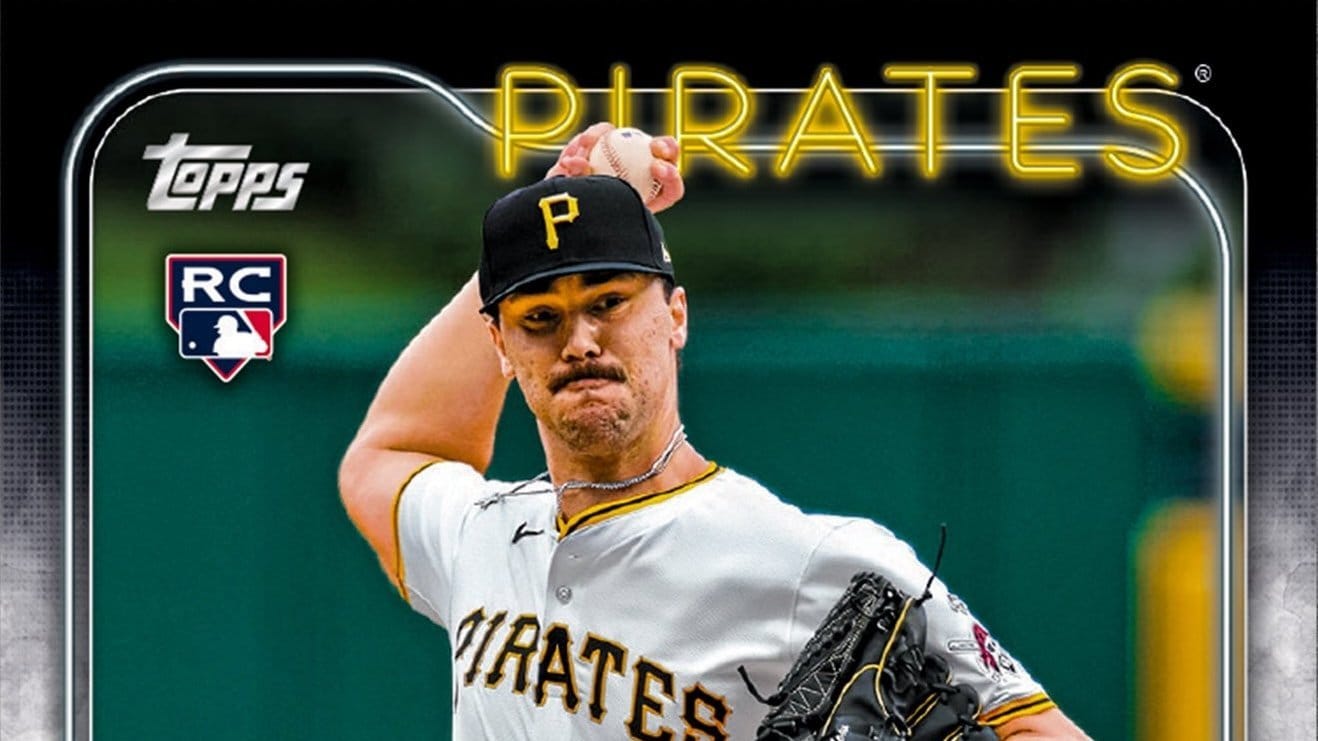

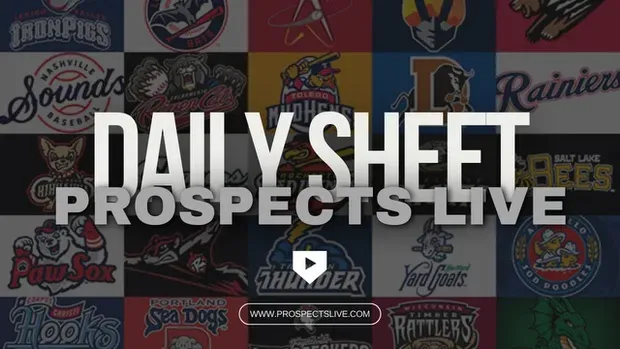

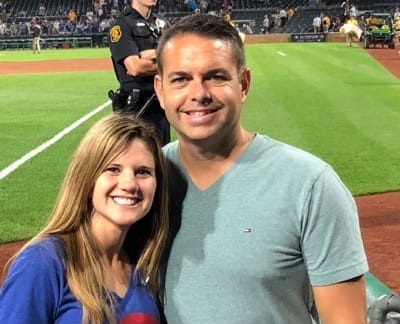
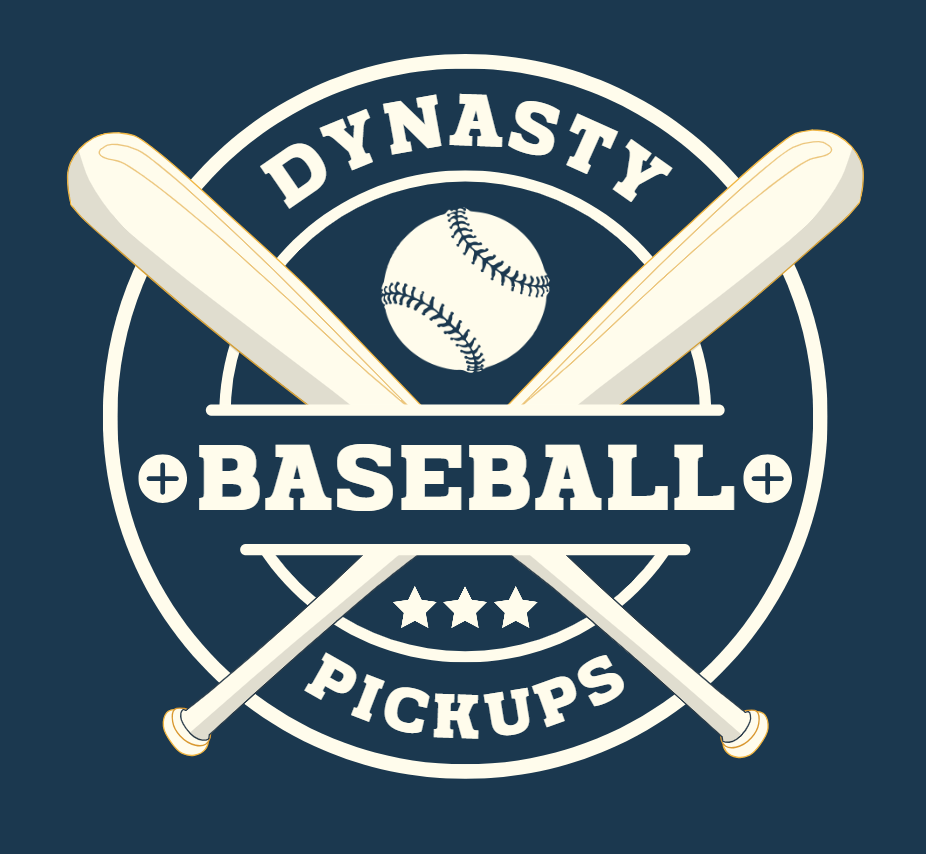


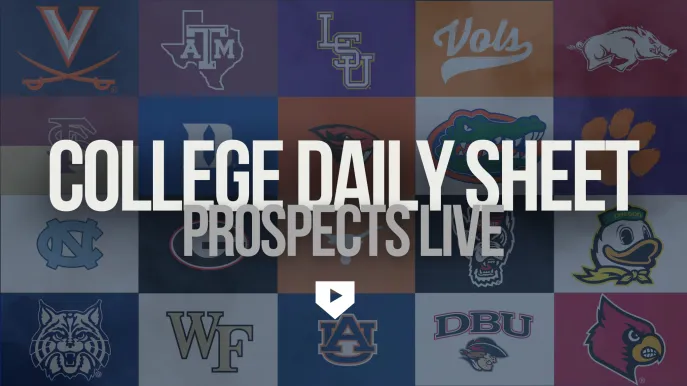


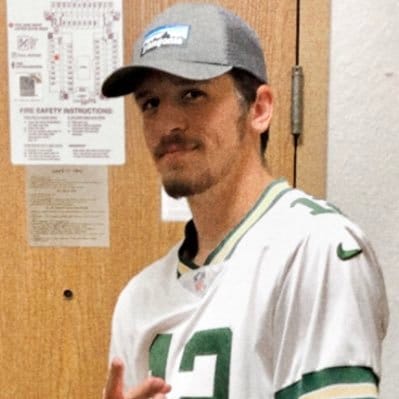

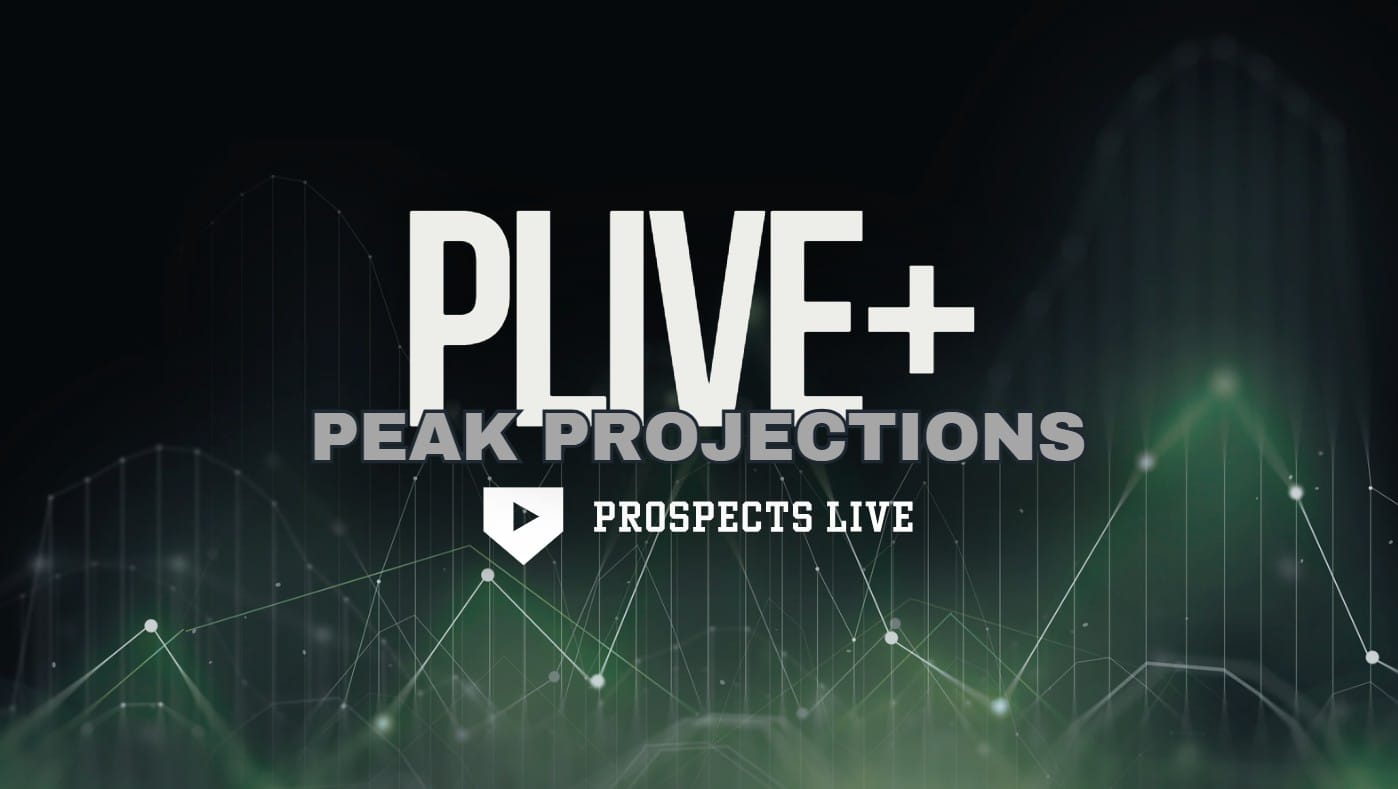


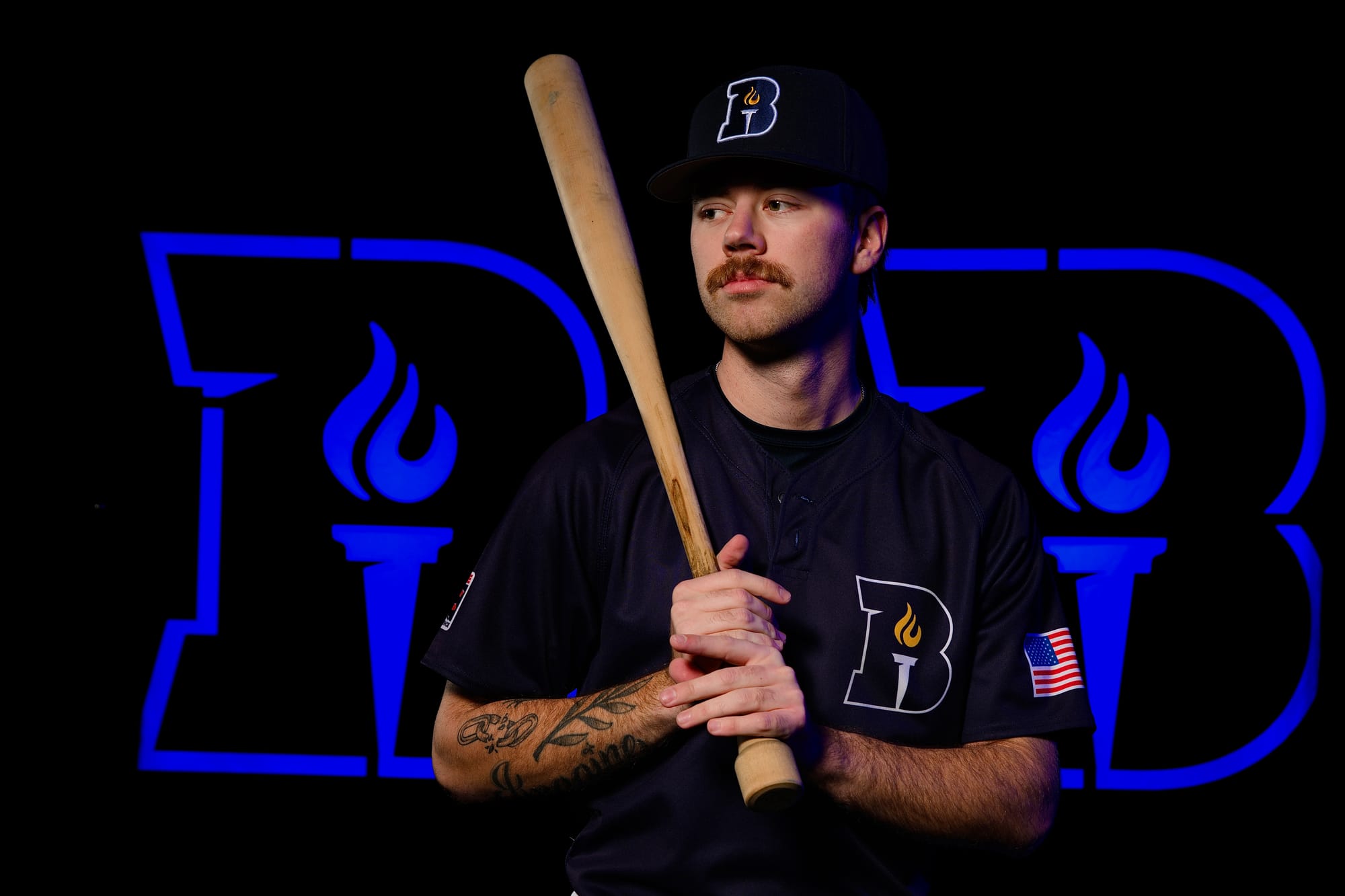
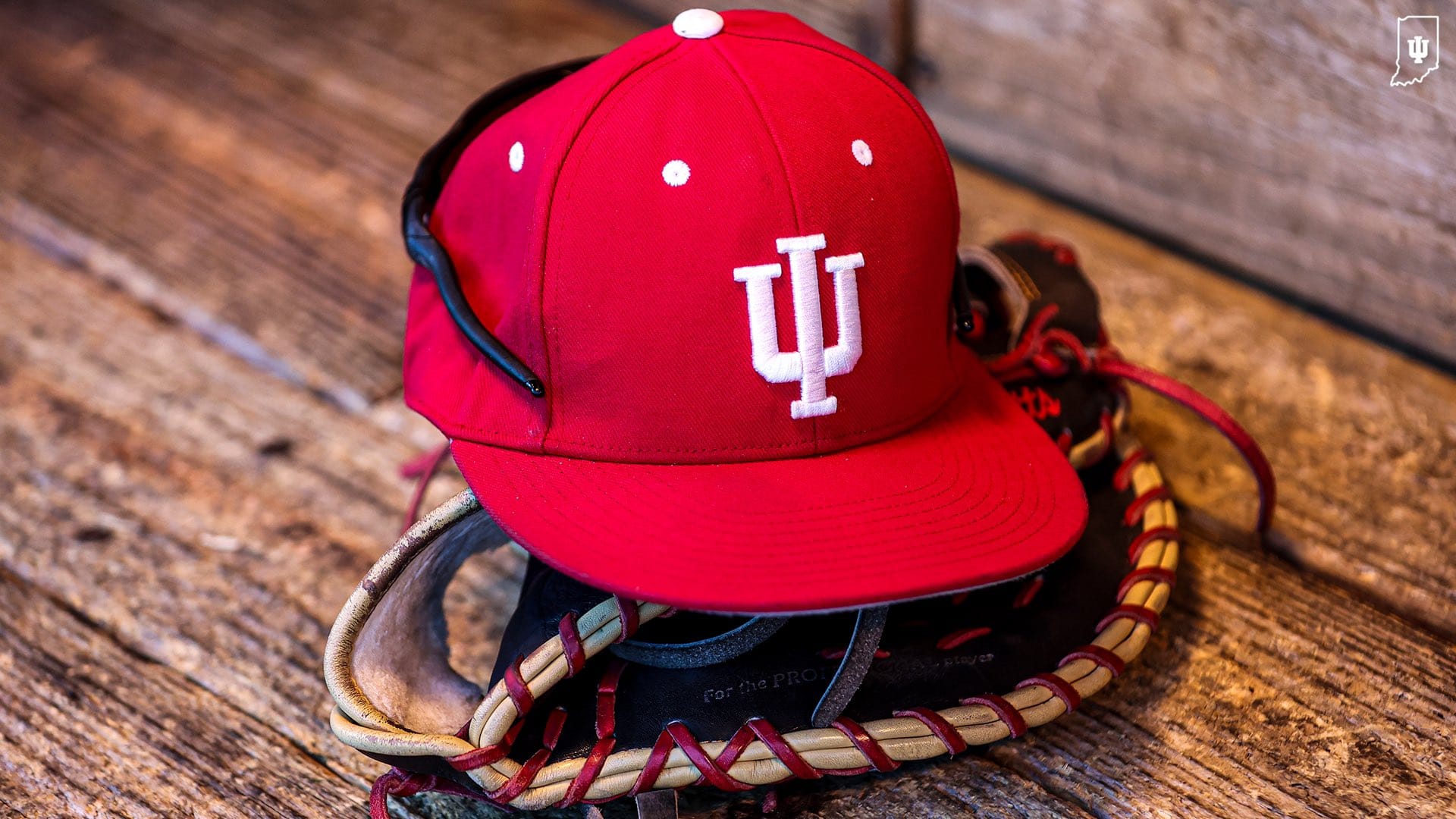
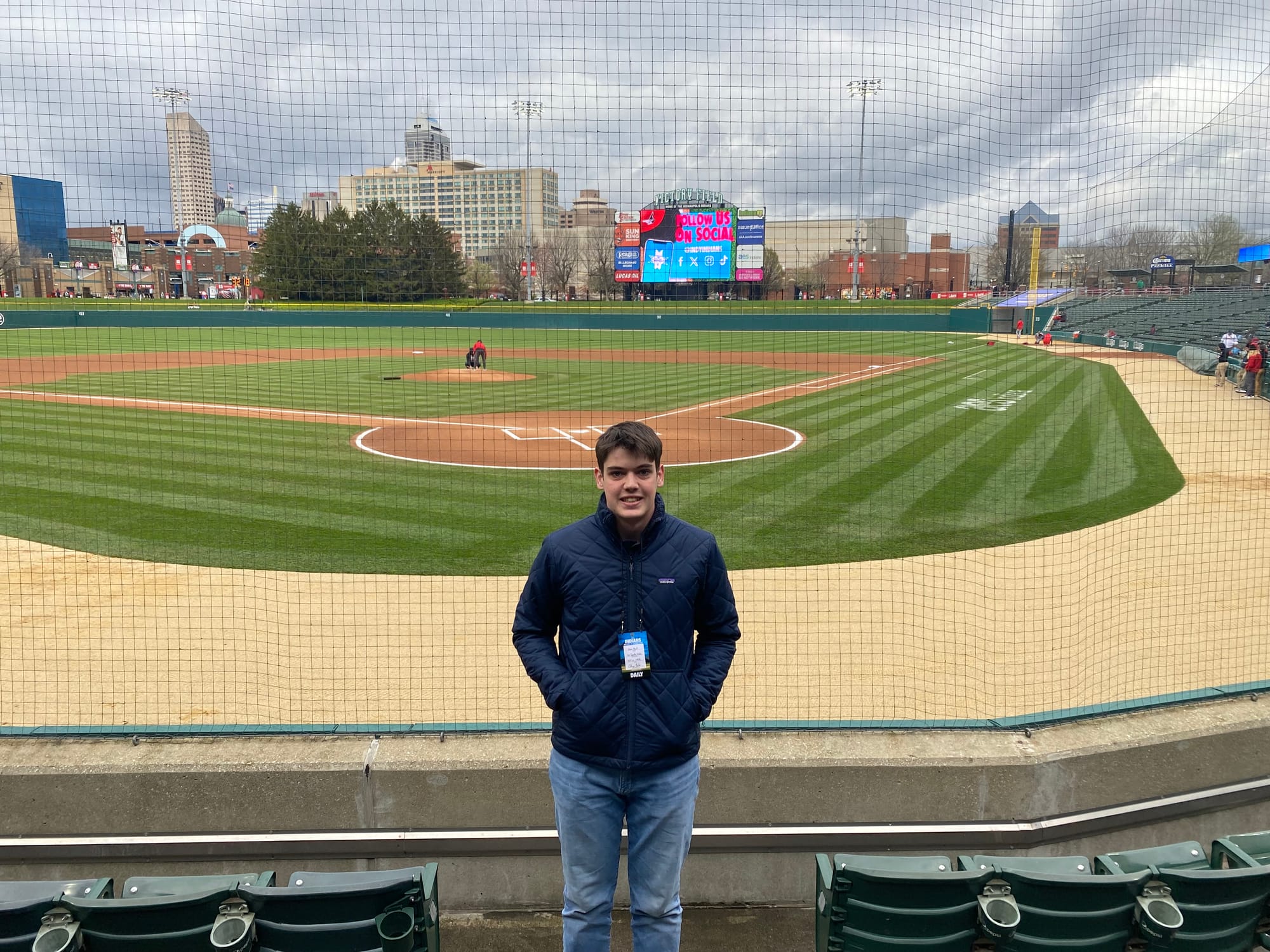
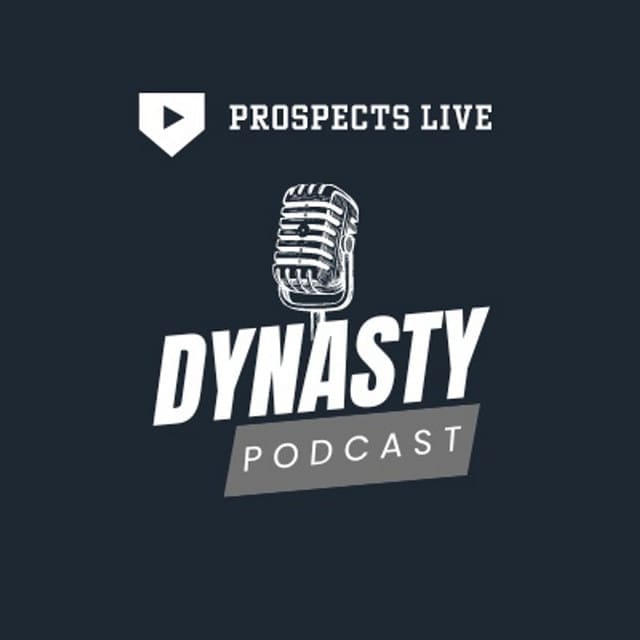
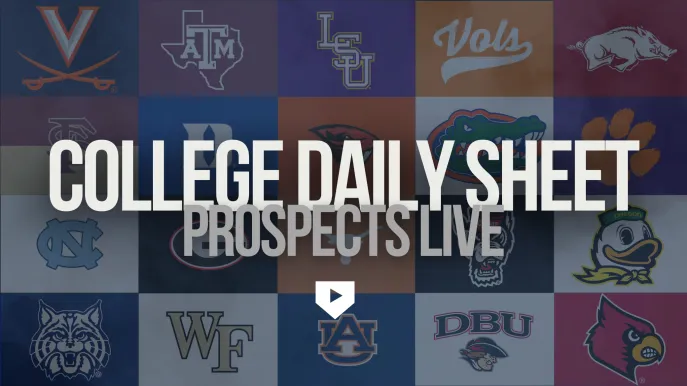
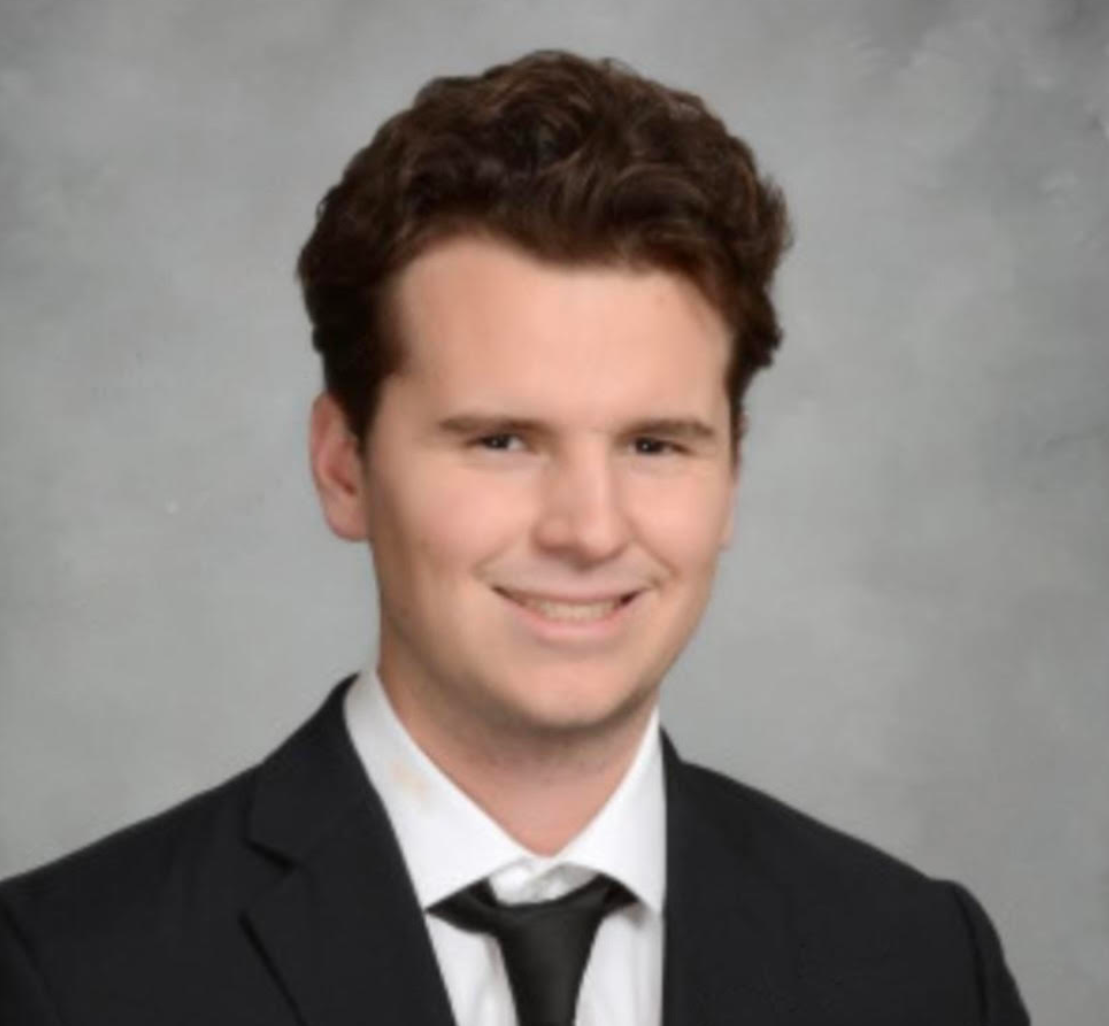
Discussion